Thanks for this thread I've done the math for all cases up to dice, in an Excel spreadsheet While it's true that the probability of a botch can go up in certain conditions, like at difficulty 9 when you go from 1 to 2 to 3 dice, at the same time the odds of success are rising faster, and there are no conditions where the odds of a botch are higher than or rising faster than the odds Risk Odds When Rolling 3 Dice against 2 When rolling 3 attacking dice against 2 defending dice attacker wins 2 3717% attacker wins 1, defender wins 1 3358% defender wins 2 2926% The code I used to calculate these odds is available at githubcom/salcode/riskboardgamediceoddsAnyone can answer im just gonna flag 2 people who know a bit in the area @Cymas @DarthaNyan
Role Playing With Probabilities The Importance Of Distributions Revolutions
What is dice probability
What is dice probability-Exercise 3 1Suppose you roll three dice repeatedly say mtimes Show the probability that he three dice The player's loss is the house's gain so the house edge is the product of 1 and the player's return, in this case or 278% For the probabilities in the sum of more than two dice please see my probabilities for 1 to 25 dice section Written by Michael Shackleford Wizard Recommends 300% 40 Free Spins Play



Www Math Utah Edu Macarthu Fall13 Math40 9 4b Pdf
So a probability of 0 means there's literally no chance of that thing happening, a probability of 05 means there's a 50% chance, and a probability of 1 means that it's certain to happen As you can see, the idea of probability is relatively simple But the idea of odds, on the other hand, is a bit more complicatedmostly because thereThere are five dice, so whatever the first die rolls there is a 1/6 chance that the second die is the same number If that occurs, there's a 1/6 chance that the third die is the same, ditto the fourth and the fifth So probability of Yahztee in one roll is 1/6 x 1/6 x 1/6 x 1/6 = 1/1296The chance of winning is 4 out of 52, while the chance against winning is 48 out of 52 (524=48) Entering A=4 and B=48 into the calculator as 448 odds are for winning you get For 4 to 48 odds for winning;
Thus H(N,2) = (1/6)(N1)/6 (1/6)(N1)/6 (1/6)(1/6) = (2N1)/36 Since the probability of throwing "more than N" on a dice is (6N)/6, the probability of throwing N on one dice AND N or more on the other is L(N,2) = (1/6)(6N)/6 (1/6)(6N)/6 (1/6)(1/6) = (132N)/36 Notice that for any particular N, the sum of H(N) and L(N) is 12/36 or 1/3AnyDice is an advanced dice probability calculator, available online It is created with roleplaying games in mind Mechanics Face Off Dice vs Cards on League of Gamemakers In my day job, I design casino games, so I spend a lot of time around cards, dice, and other instruments of randomness Rolling a die is a classic example of picking with replacement, meaning the pool of possible outcomes remains the same
The probability of them passing the test (by scoring an 8 or less) is 7222% The probability of them failing the test (by scoring a 9 or more) is 2777% The probability of drawing a red card from a standard deck of cards is 26/52 (50 percent) The probability of drawing a club from that deck is 13/52 (25 percent) And so on The odds for an event is the ratio of the number of ways the event can occur to the number of ways itMany people wrongfully assume odds and probabilities are the same thingThey're definitely not, as there's a significant difference between saying there are




How Not To Be Fooled By Odds The New York Times




Dice Probability Explained Game Master Dice
The first half of this page has a table of all the possible dice attacks from 11 to 32, with the probabilities of each outcome, plus the average gain for the attacker The second half is an applet that will compute the odds in an attack to the death by any number of armies in a single province against any number in a neighboring provinceWhen we say that the odds are in favour we mean that we get A favourable outcome when the process is completed To get a clear picture let us see a small example When you roll a die you win if you get 2 or 4 So here if odds are to be in our faFor example, 9 can happen 4 times from rolling two dice You can't get it by rolling 36, 45, 54, or 63 So, the probability of getting a 9 is 4/36, because there are 4 ways to get it out of 36 possible combinations In decimal form, that's a probability of 1111% The number 3, on the other hand, only occurs twice in the table



Role Playing With Probabilities The Importance Of Distributions Revolutions



Role Playing With Probabilities The Importance Of Distributions Revolutions
The probability of having the winning plate is 1 out of 25 Odds of winning = number of chances to win number of chances to draw other numbers Odds of winning = 124 (Read as "1 to 24") Odds of not winning = number of chances to draw other numbers number of chances to win Odds of not winning = 241 (Read as "24 to 1")For example, the odds against rolling a 5 before a 7 using two dice are 6 to 4 We get these odds because there are six ways to make the 7 vs four ways to make the 5 To figure this out, take the number of ways a 5 can be made with two dice (1 4, 2 3, 3 DnD Dice Master The Dungeon's Complete Guide to Dice says at 1134 am There is a great article with useful tables that shows the probabilities for each of the d rolls for advantage and disadvantage over at Columbia University's statistics department website
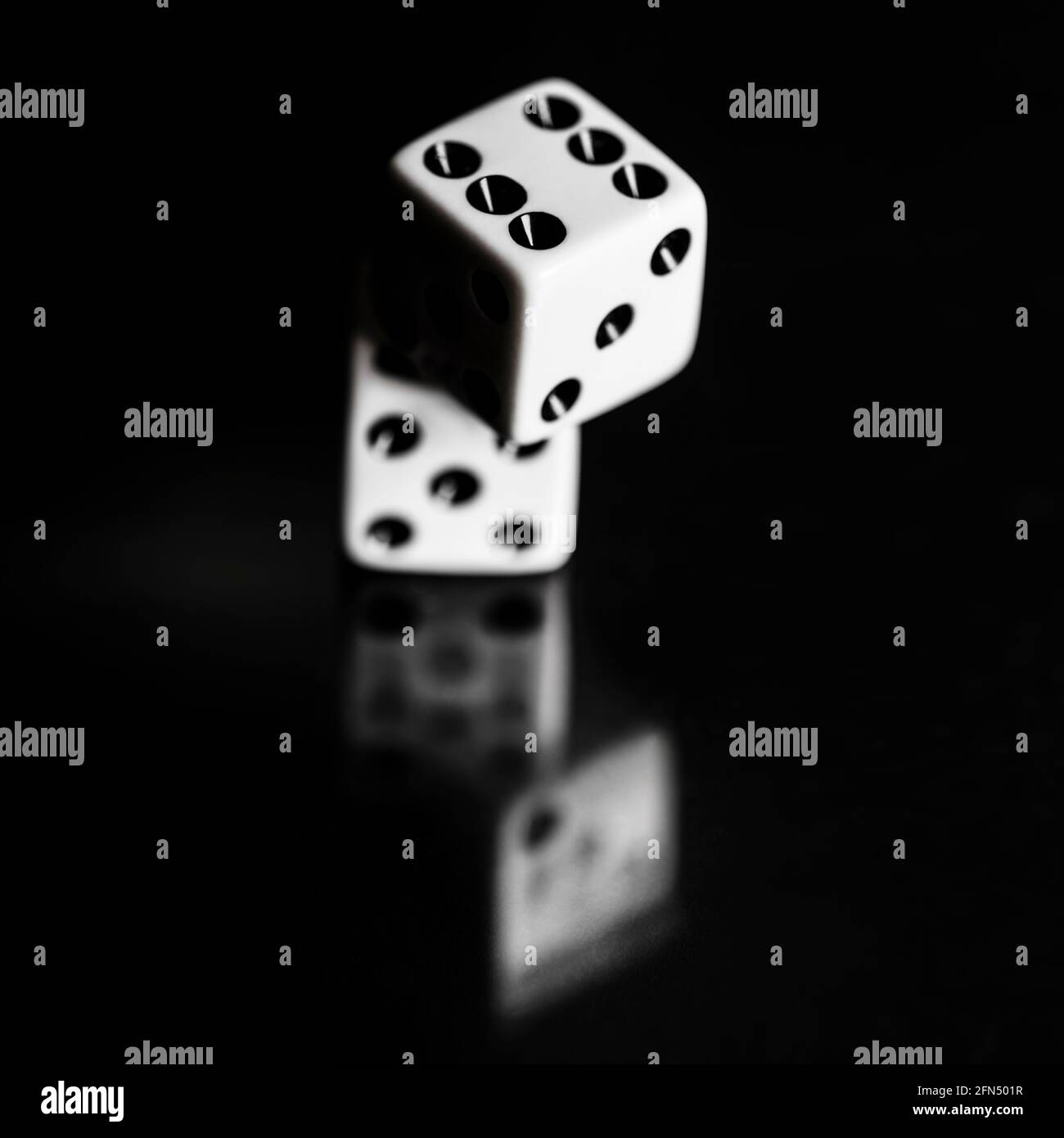



Probability Game High Resolution Stock Photography And Images Alamy
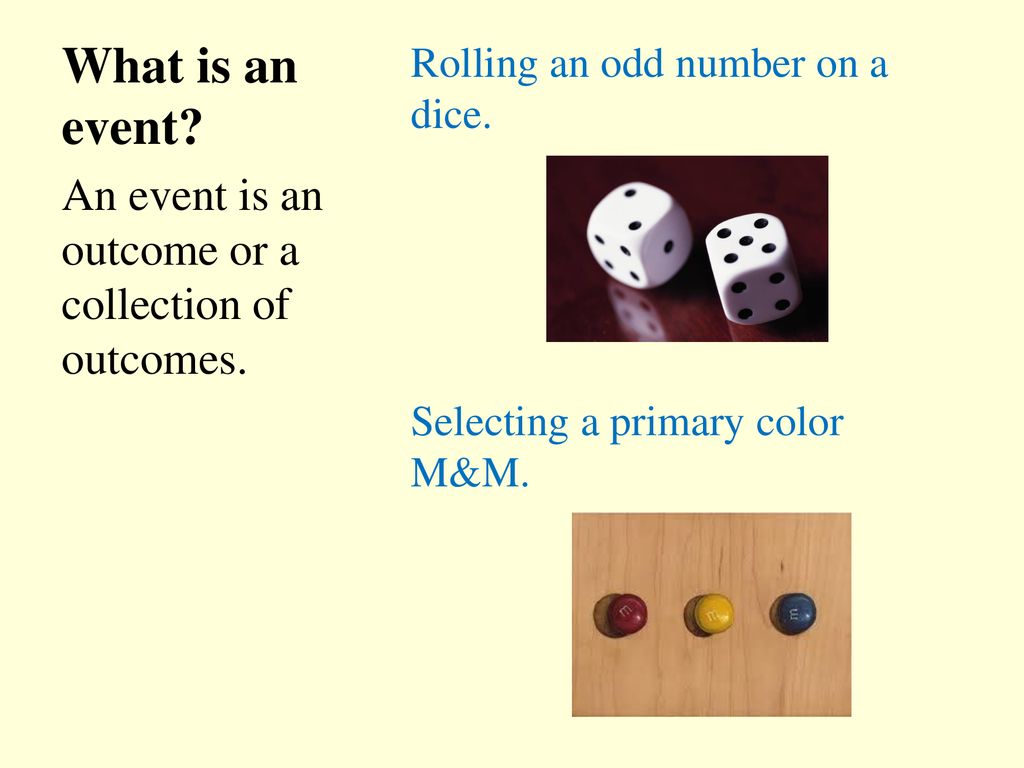



Lesson 13 1 Find Probabilities And Odds Ppt Download
The probability of rolling each number is 1 out of 6 We will write the probability of rolling an odd number on a dice as a fraction The odd numbers are 1, 3 and 5 This is 3 of the 6 sides of the dice The probability of rolling an odd number on a dice is 3 / 6 There are the basics, such as to get any single number on each die type, and for those the odds are approximately D4 = 25% D6 = 17% D8 = 13% D10 = 10% D12 = 8% D = 5% For slightly more complicated odds, these are the odds of getting a number equal to or greater than a target number on a single die DieThe odds of rolling one five from two dice rolls is 1 36 The odds of rolling an odd number from the sum of two rolls requires that we roll one even number from one die and an odd number from another die The odds of this happening are 1 2 Therefore, the odds of either even occuring should be 1 36 1 2 = 19 36 However, this is incorrect



Role Playing With Probabilities The Importance Of Distributions Revolutions
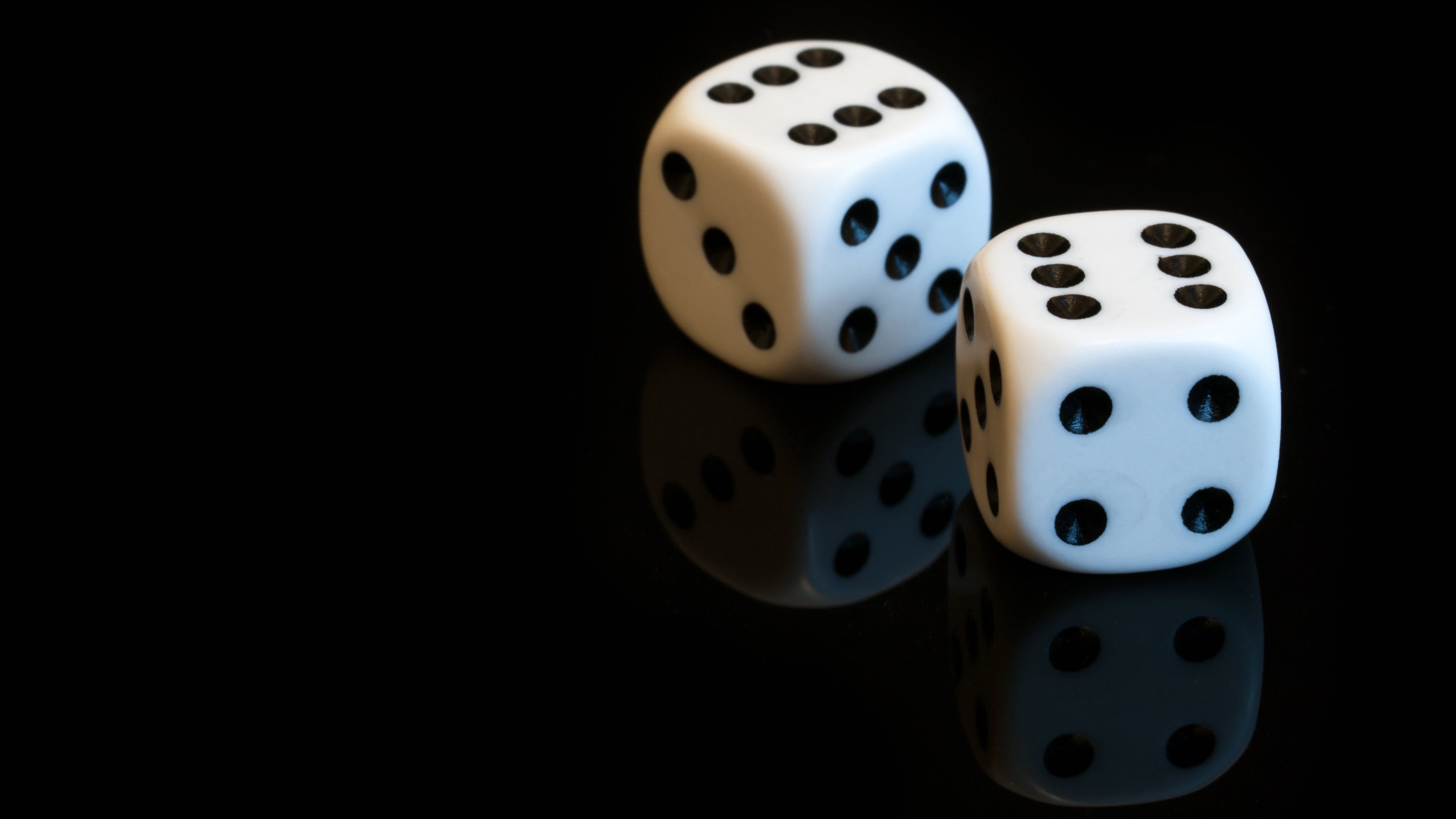



A Statistical Look At Liar S Dice The Gambler Vs The Mathematician By Matt Dodge Codeburst
Classic Traveller resolves many actions by random numbers generated by 6sided dice, typically 1d6 or 2d6 Of these, the 2d6 die roll is the most common The problem with this system is that it does not generate a value spread where each value probability is equal For example, the d has an equal probability of generating any integer between Probability vs Odds Real life is full of incidents with uncertainty The terms probability and odds measure one's belief in the occurrence of a future event It may confuse since both 'Odds' and 'probability' are related to the potential that event occurs However, there is a difference Probability is a broader mathematical concept I know theres a 75% chance for mutations to occur My question is if 1 parent has hit the / is the probability halved or is it still 75% with only 1 parent being able to give mutations?




Ex Find Basic Probabilities When Rolling One Fair Die Youtube




3 Ways To Win At Dice Wikihow
How to find probability and odds and the difference between the two We also discuss experimental probablility, theoretical probability, odds in favor, andConversely, if odds are very small (1/1000), probability will also be very small, close to 0 Probability/Odds Conversion Converting probabilities into odds, we simply divide the probability by 1 less the probability, eg, if the probability is 25% (025), the odds are 025/075, which can also be expressed as 1 to 3 or 1/3 or 0333 Odds Probability is defined as the fraction of desired outcomes in the context of every possible outcome with a value between 0 and 1, where 0 would be an impossible event and 1 would represent an inevitable event Probabilities are usually given as percentages ie 50% probability that a coin will land on HEADS Odds can have any value from zero
/dice-probabilities-rolling-2-sixsided-dice-411406_hero_3220-4c2f1909efb84327bd236c34e7610364.jpg)



Dice Probabilities Rolling 2 Six Sided Dice




Beginner S Guide How To Calculate Probability Free Sports Betting Guide
To determine the probability of rolling any one of the numbers on the die, we divide the event frequency (1) by the size of the sample space (6), resulting in a probability of 1/6 Rolling two fair dice more than doubles the difficulty of calculating probabilities This is because rolling one die is independent of rolling a second one Probability Distribution Function The PDF for the various dice shows an interesting seesawing pattern that is influenced by the probabilities of rolling two dice and keeping the higher value rolled The points where the PDF become 0 arise from the fact that if the die rolled max, it is rerolled, so any multiple of the max die size can't truly Probabilities for the Sum of 1 to 25 Dice Introduction This section endeavors to answer the frequently asked question on the probability for any given total over the throw of multiple dice I shall show the number of combinations (up to 15 significant digits) and probability (to 15 decimal places) of totals for 1 to 10, 15, , and 25 dice
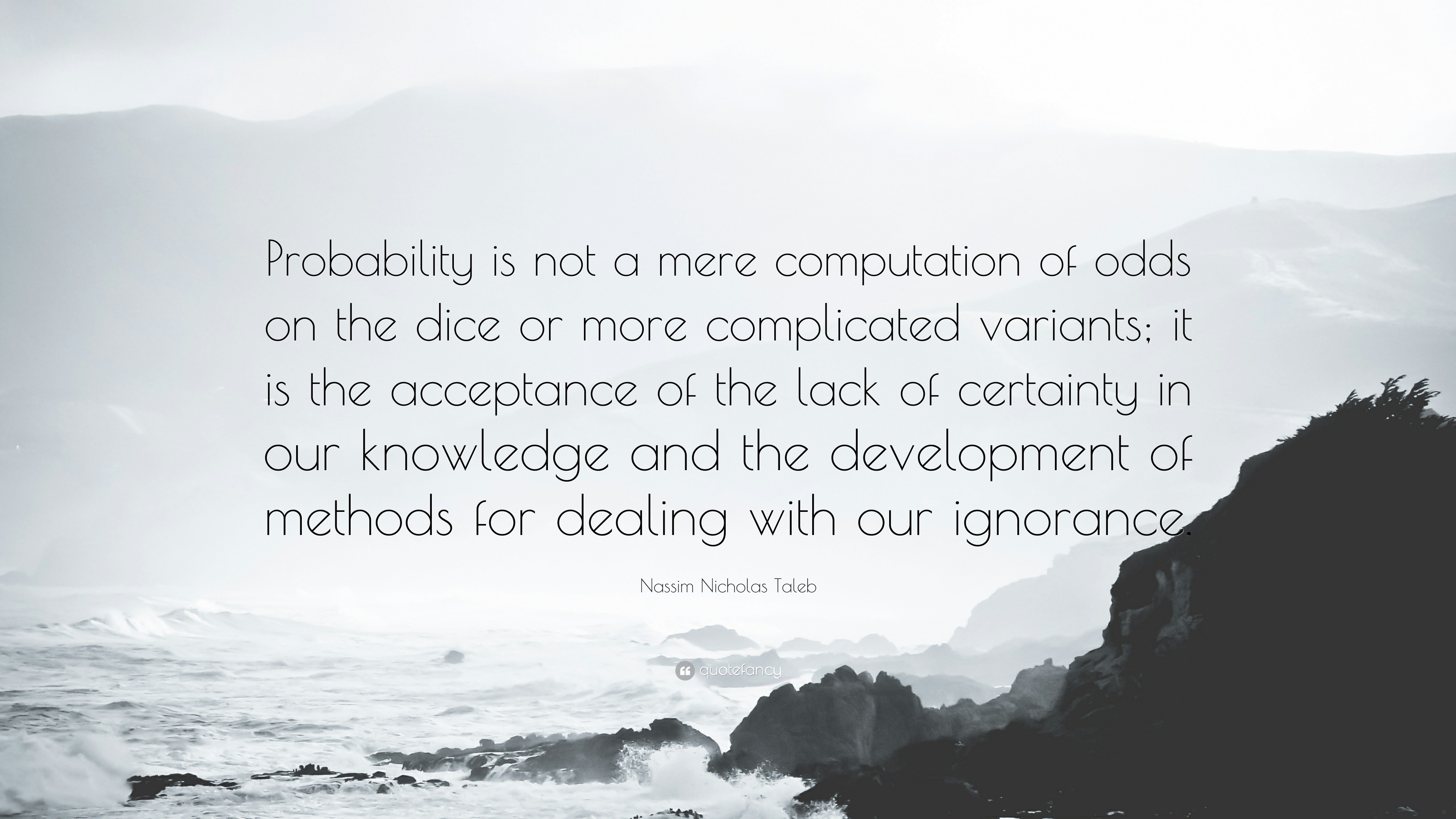



Nassim Nicholas Taleb Quote Probability Is Not A Mere Computation Of Odds On The Dice Or More Complicated Variants It Is The Acceptance Of The Lack



With Two Dice What S The Probability Of Rolling Doubles Blog Monty Hall Problem Simulation Game Stay Or Switch
Polyhedral dice 4 sided dice, also known as a tetrahedron each face is an equilateral triangle 6 sided dice, a classic cube each face is a square 8 sided dice, also known as an octahedron each face is an equilateral triangle 10 sided dice, also known as a pentagonal trapezohedron eachHere are the two definitions as used in probability "OR" means that you are calculating the probability that either event A alone, event B alone or both events A and B occurred "AND" means that both events A and B have to occur FOr example, supProbability of Winning = () or % Losing = () or %



Partner Party Even Odd Probabilities Table List Marioparty



Http Mrpaynemath Weebly Com Uploads 3 8 9 9 Math31ch3 1notes Workings Pdf
Probability has a limited range from zero to one Odds has an infinite range The probability of something happening is always less than the odds of it happening (assuming the probability is nonzero) The smaller the probability, the more similar probability and odds RISK Battle Odds Calculator ("RiskOdds") calculates the probability of an attacker winning a given battle sequence in the classic RISK board game (US/UK rules) The initial number of attacking and defending armies is required In each round of battle, the attacker may roll a number of dice equal or less than the number of attacker armies2In a horse race the odds that Romance wins are given 2 to 3 while the odds that Downhill wins are 1 to 2 Give the odds that either Romance or Downhill wins?
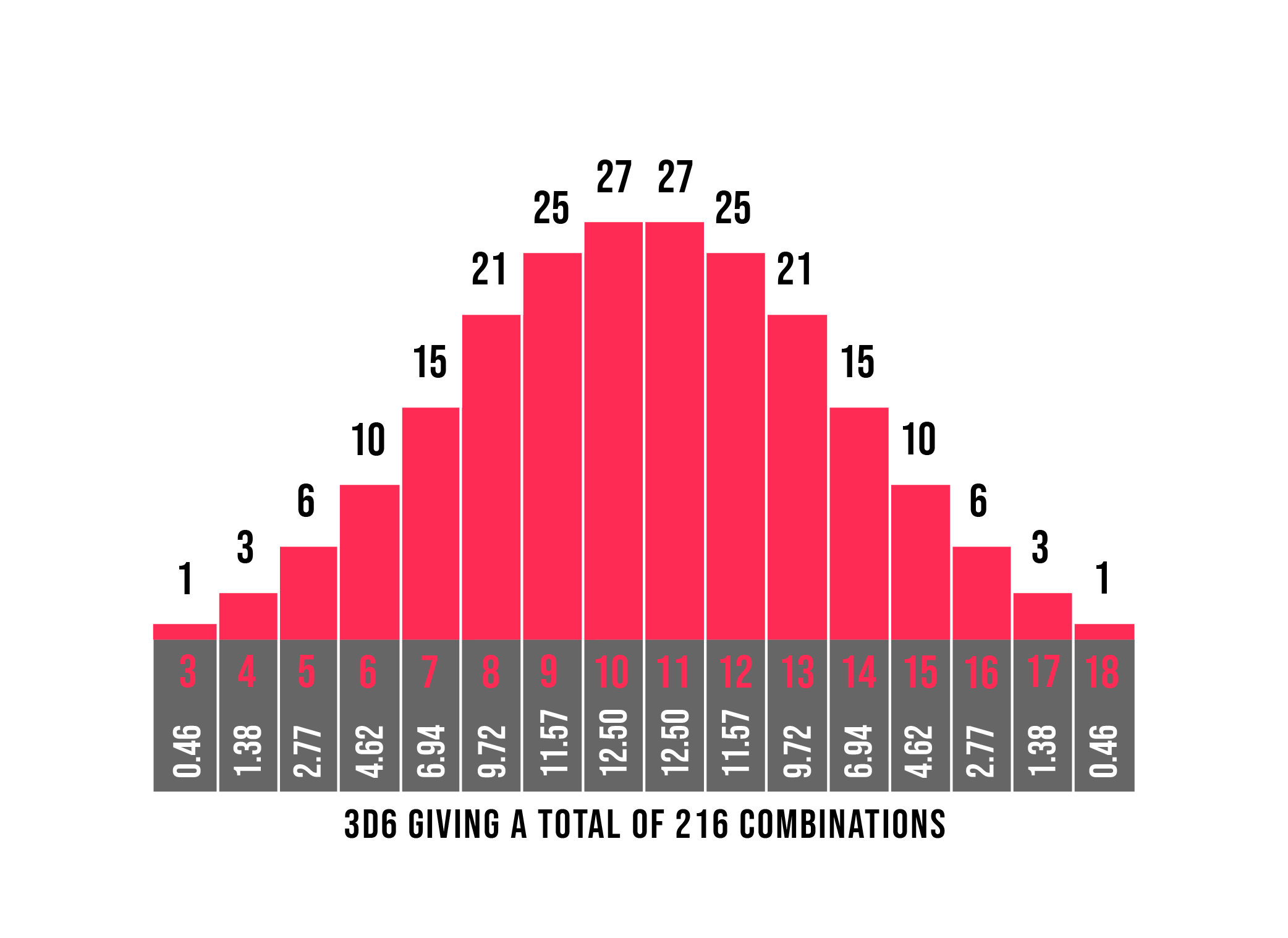



3d6 Probabilities The Dark Fortress




Gambling Math And Probability Examples 7 Ways To Calculate Odds
The primary difference between odds and probability is that while odds is a ratio of occurrence to nonoccurrence, the probability is the ratio of occurrence to the whole Odds are expressed in the ratio, the probability is either written in percentage form or in decimalSince each die has six sidesand the game is played with two dice, there are 36 (6 x 6) combinations that canbe made giving totals of two through twelve Take a look at the Dice Chart You will see that there is only one way to make the numbers two (1 and 1) and twelve (6 and 6) There are two ways to make the number three (2 and 1) and (1 and Odds can be expressed as a ratio of the probability an event will happen divided by the probability an event won't happen Odds in favor of A = A / (1 A), usually simplified to lowest terms, For instance, if the probability of an event occurring is 075, then the odds for it happening are 075/025 = 3/1 = 3 to 1 for, while the probability that it doesn't occur is 1 to 3 against
.jpg/1280px-Dice_(typical_role_playing_game_dice).jpg)



Wargaming Mechanics Opposed Die Rolls
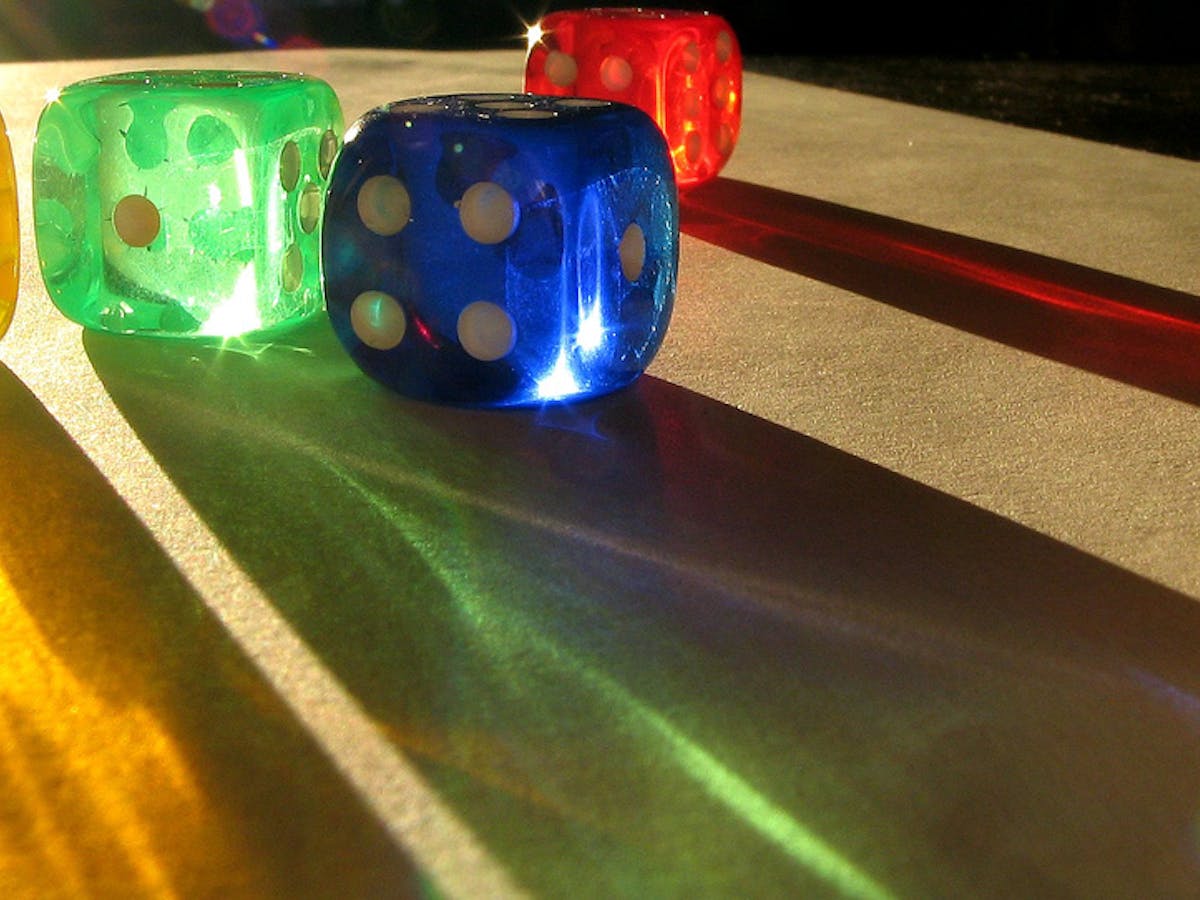



If You Want To Roll The Climate Dice You Should Know The Odds
The probability of getting a given value for the total on the dice may be calculated by taking the total number of ways that value can be produced and dividing it by the total number of distinguishable outcomes So the probability of a 7 on the dice is 1/6 because it can be produced in 6 ways out of a total of 36 possible outcomes For the odds of rolling a specific number (6, for example) on a die, this gives \text{Probability} = 1 ÷ 6 = 0167 Probabilities are given as numbers between 0 (no chance) and 1 (certainty), but you can multiply this by 100 to get a percentage So the chance of rolling a 6 on a single die is 167 percentSimilarly, the probability that a single roll of the die will be a 1 is 1/6 The same holds true for 2, and for 3, and for 5, and for 6 The singleevent probability that a roll of the die will result in any one face you select is 1 in 6 Cumulative Probability Cumulative probability measures the odds of two, three, or more events happening




In A Single Throw Of Two Dice Find The Probability Of Getting A Doublet Of Odd Numbers




Probability Test Review What Are Your Chances Of Passing Ppt Download
Playing 2 vs 1 dice I get around a % win rate Now to my problem, if I want to calculate the amount needed to always win as the house, the odds of losing (for the player) needs to be higher than the potentialwinningriskamountNext Conditional Probability Up What are the chances Previous What are fair games Index Probabilities for the two dice The colors of the body of the table illustrate the number of ways to throw each total The probability of throwing any given total is the number of ways to throw that total divided by the total number of combinations (36) The probability that an event will occur is the fraction of times you expect to see that event in many trials Probabilities always range between 0 and 1 The odds are defined as the probability that the event will occur divided by the probability that the event will not occur If the probability of an event occurring is Y, then the probability of the event not occurring is 1Y (Example If the probability of an event is 080 (80%), then the probability




Star Wars Edge Of The Empire Dice Roll Probability Gaming Leisure Activities




Two Dices Are Thrown Simultaneously Find The Probability Of Getting An Even Number As Their Sum Yahoo Answers India Odds Dice



Solved In The Game Of Backgammon Two Dice Are Rolled Obtaining Doubles Is Desirable A Determine The Probability Of Obtaining Doubles Exactly Course Hero
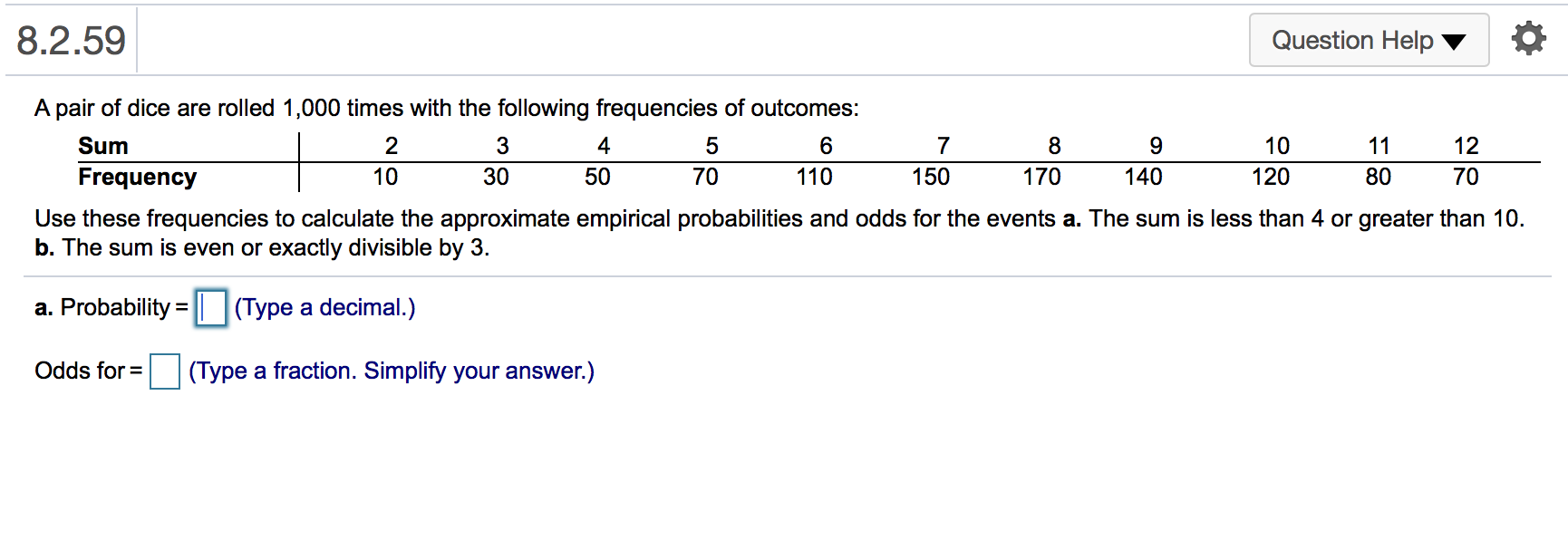



Solved 8 2 59 Question Help 10 A Pair Of Dice Are Rolled Chegg Com



Http Www Csun Edu Blw 310test1review Pdf
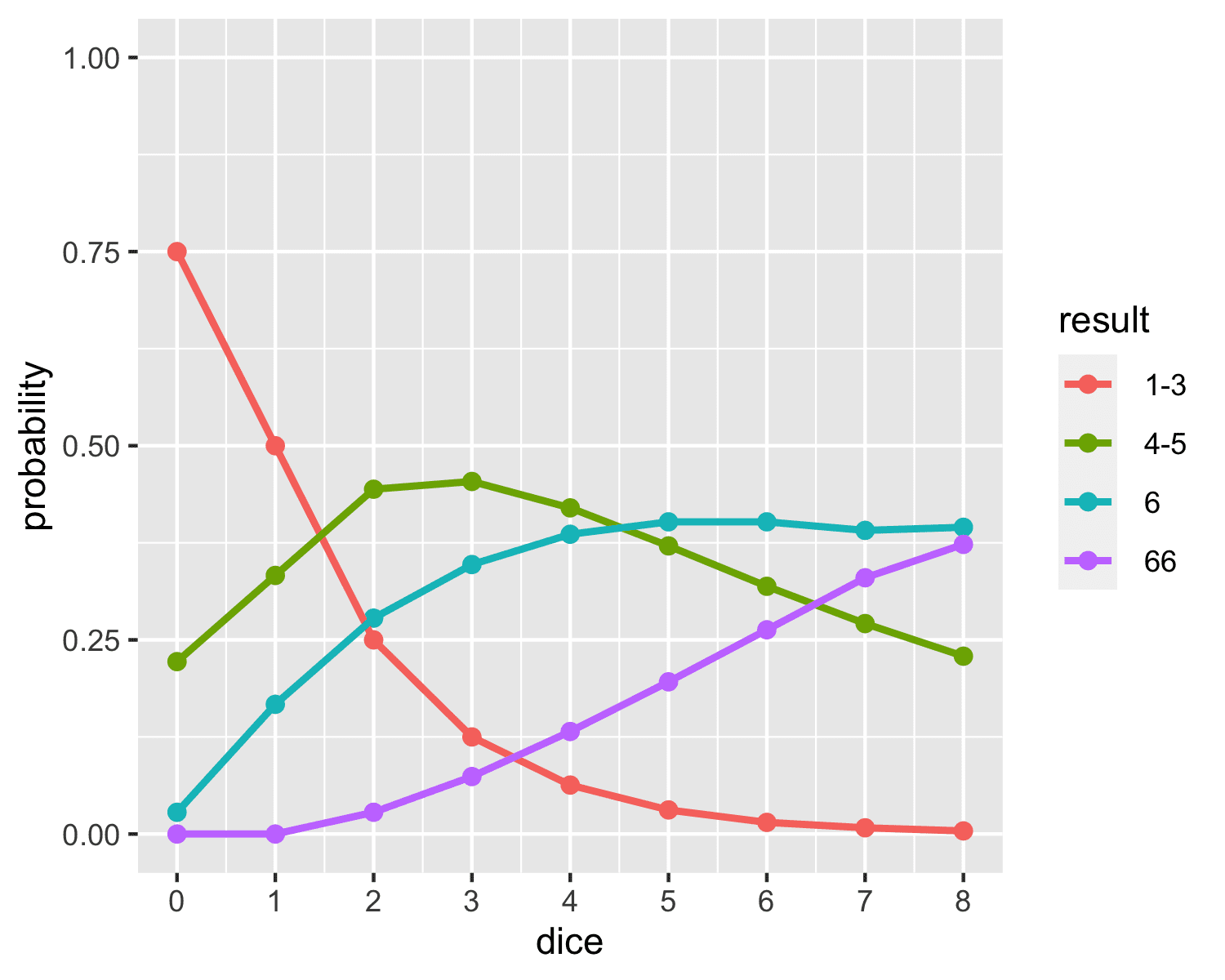



Probabilities For Action And Resistance In Blades In The Dark Statistical Modeling Causal Inference And Social Science




Column The Probability Of Being Right Or Wrong




Ex Determine Odds Using Probability Youtube
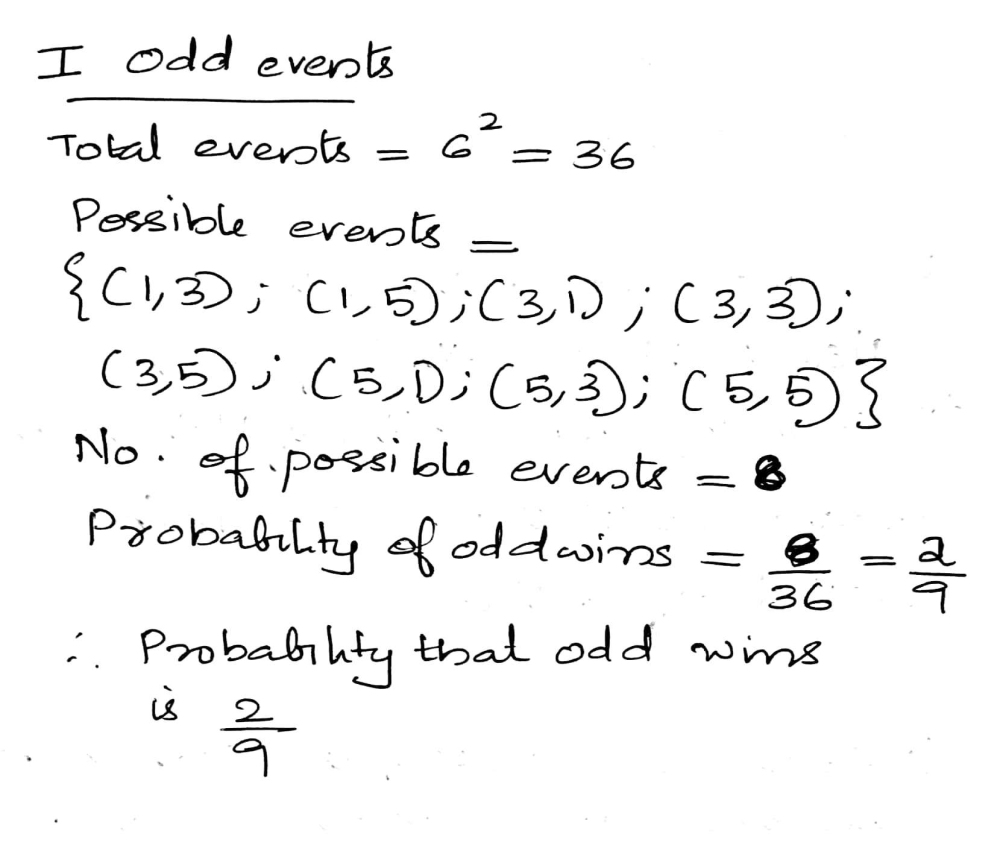



Suppose You Are Playing A Very Simple Two Person Dice Game Called Odds N Evens One Person Chooses To Be Odd And Wins Whenever The Product Of His Two Dice Is Odd The




Dice Odds Visualization Boardgamegeek




From Election Upsets To Climate Chaos Rolling The Dice Helps Us Appreciate The Odds



Probability Distributions For Rolling D4 D6 D8 D10 D12 And The Wild Die With Acing Savageworlds



Www Mchs Gsacrd Ab Ca Eteacher Download 1353
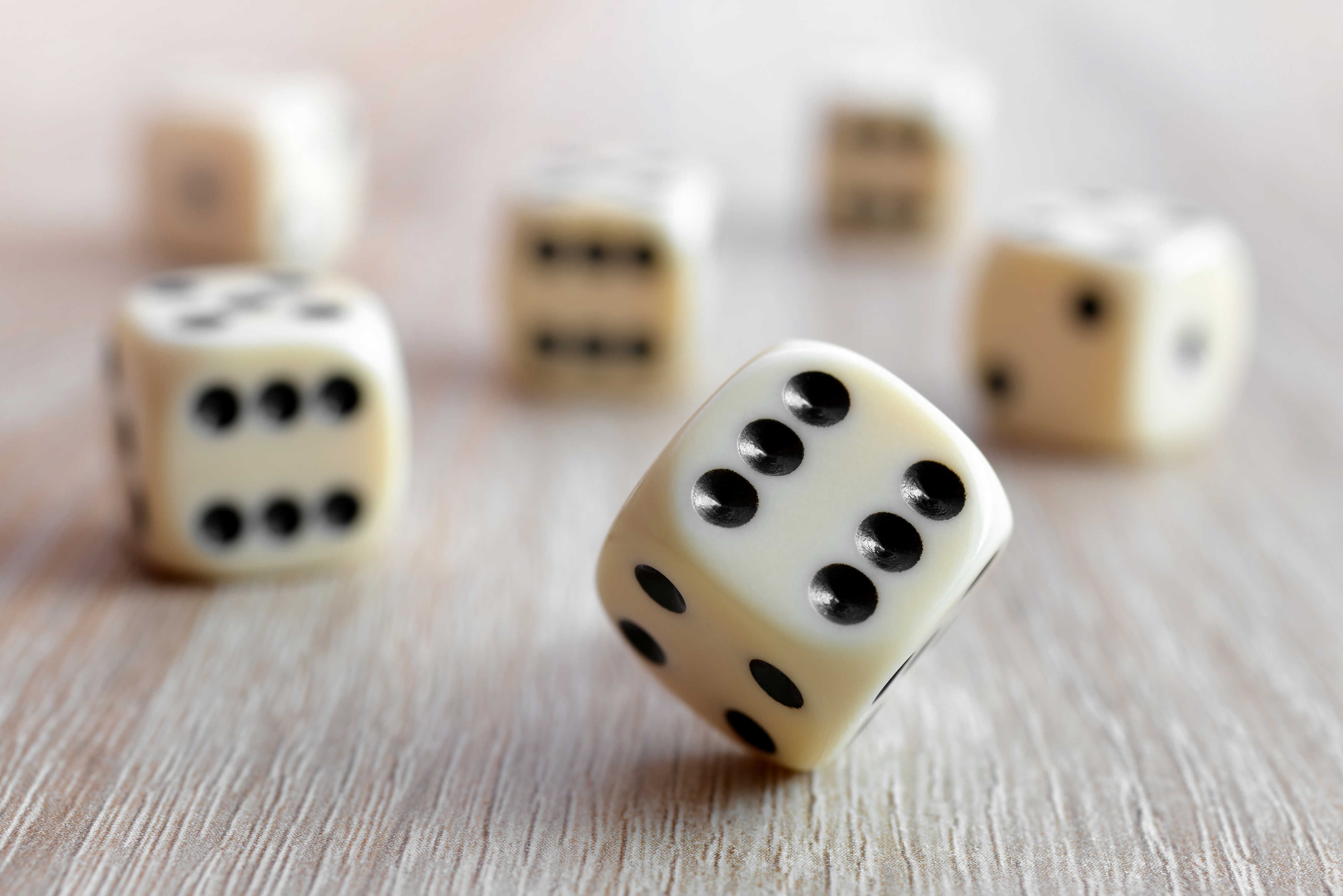



How To Calculate Dice Probabilities




Probability Probability Odds
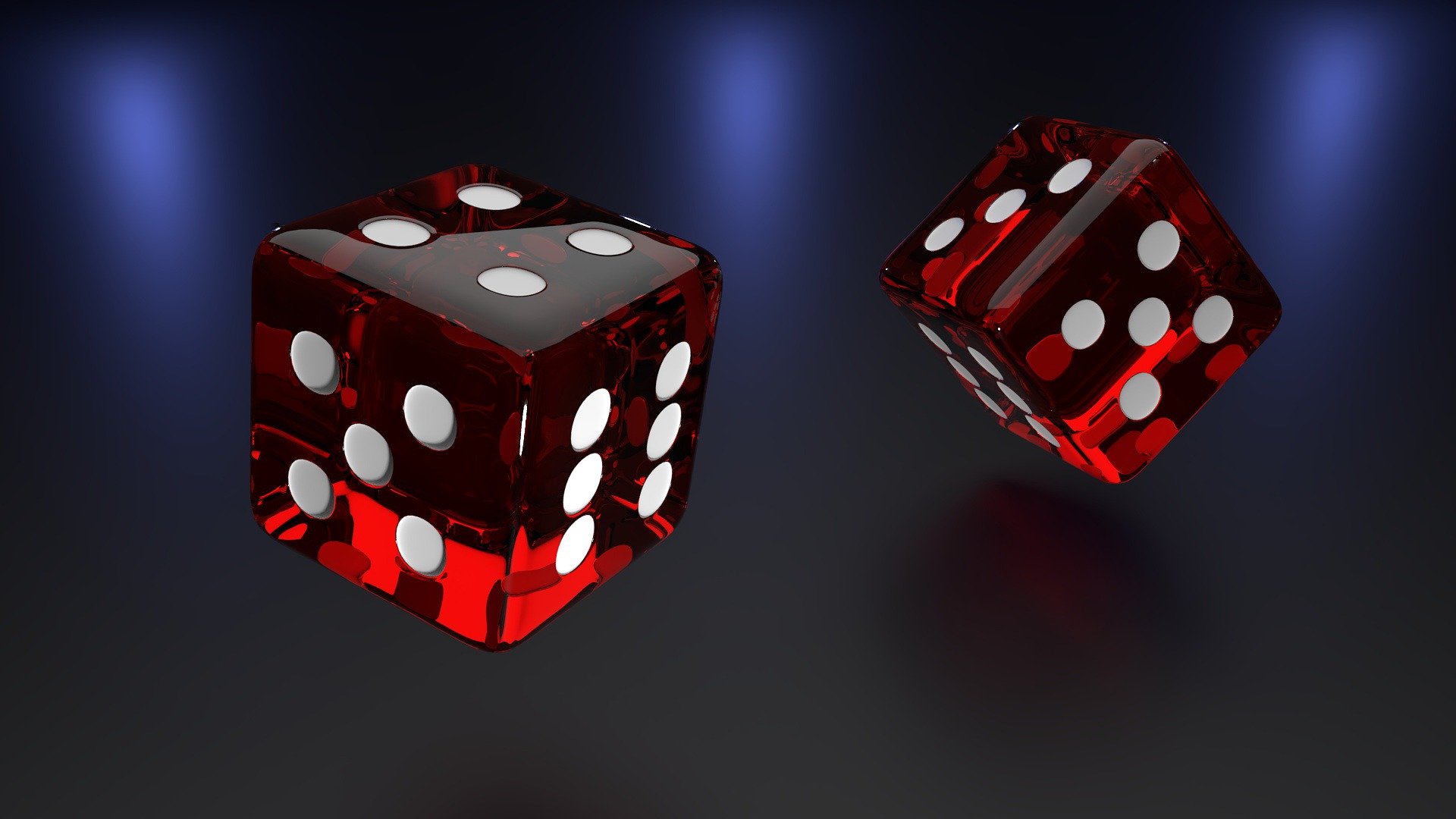



Why Odds Ratios Are Odd Welcome To Vetzone




Spacetime And Geometry Zilch How To Play And Probabilities




Probability Of Two Fair Dice Rolls Having A Total Of 7 Or 11 Mathematics Stack Exchange




The Loaded Dice Puzzle And My Reaction To Power Up A New Book Mind Your Decisions




Craps Odds Detailed Explanation Of Craps Odds And Probabilities



Q Tbn And9gcsxky6mwhqpaqie9uifujlxx3l63mv16ewppwulk1j4dpk5 Ihq Usqp Cau
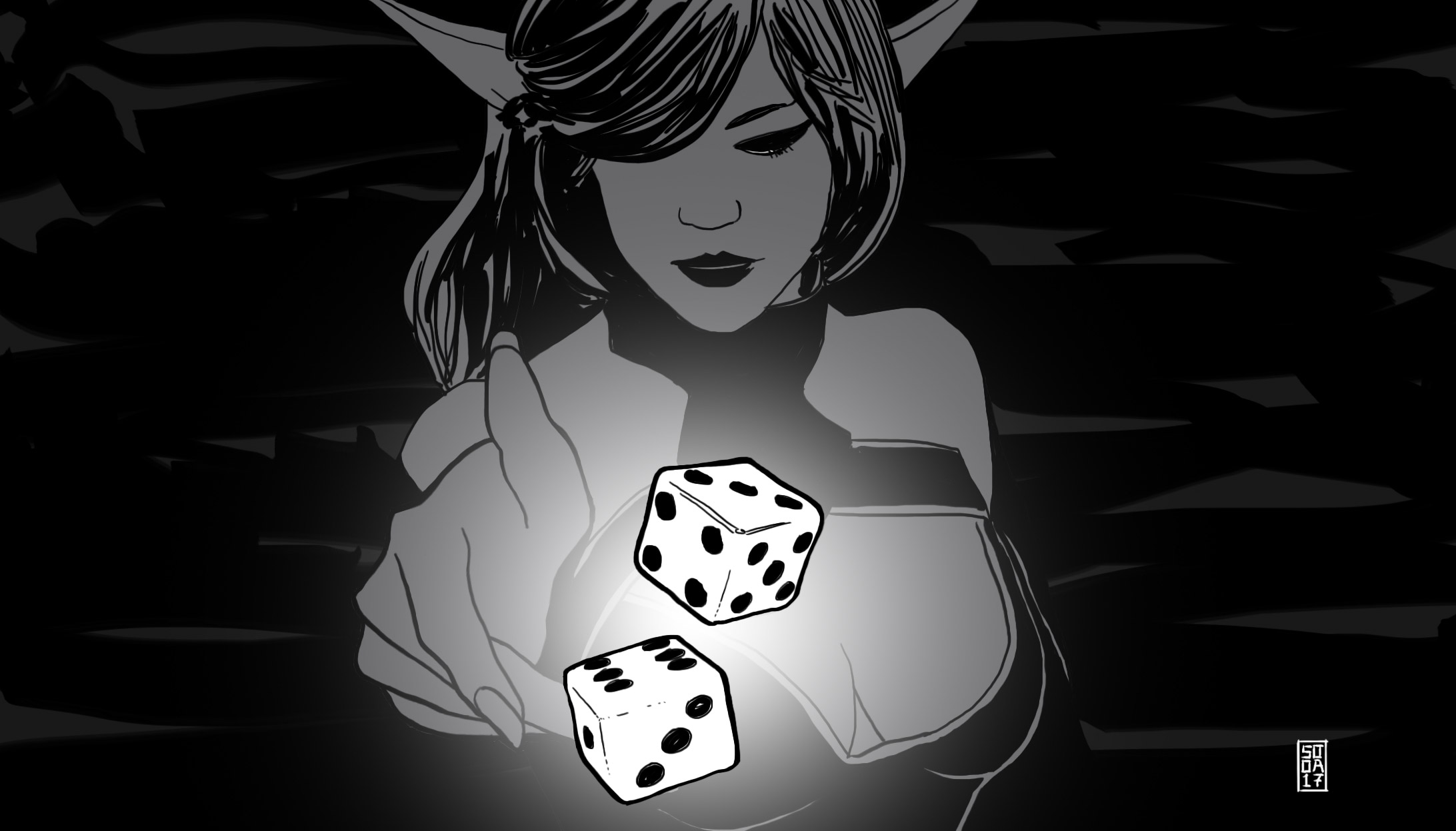



Blood Bowl Odds Blood Bowl Strategies
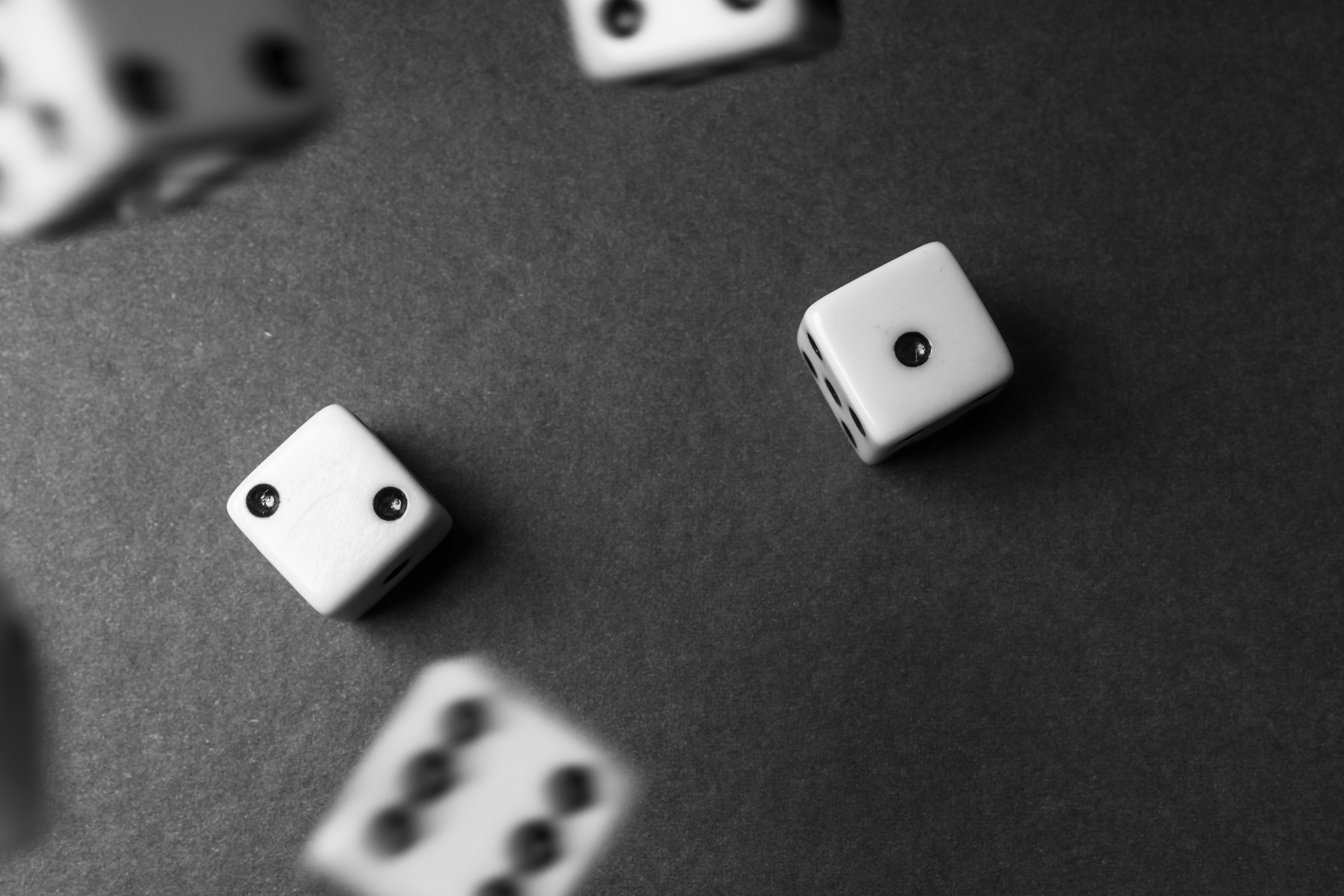



How To Calculate Dice Probabilities




What Is An Odds Ratio And How Do I Interpret It Critical Appraisal
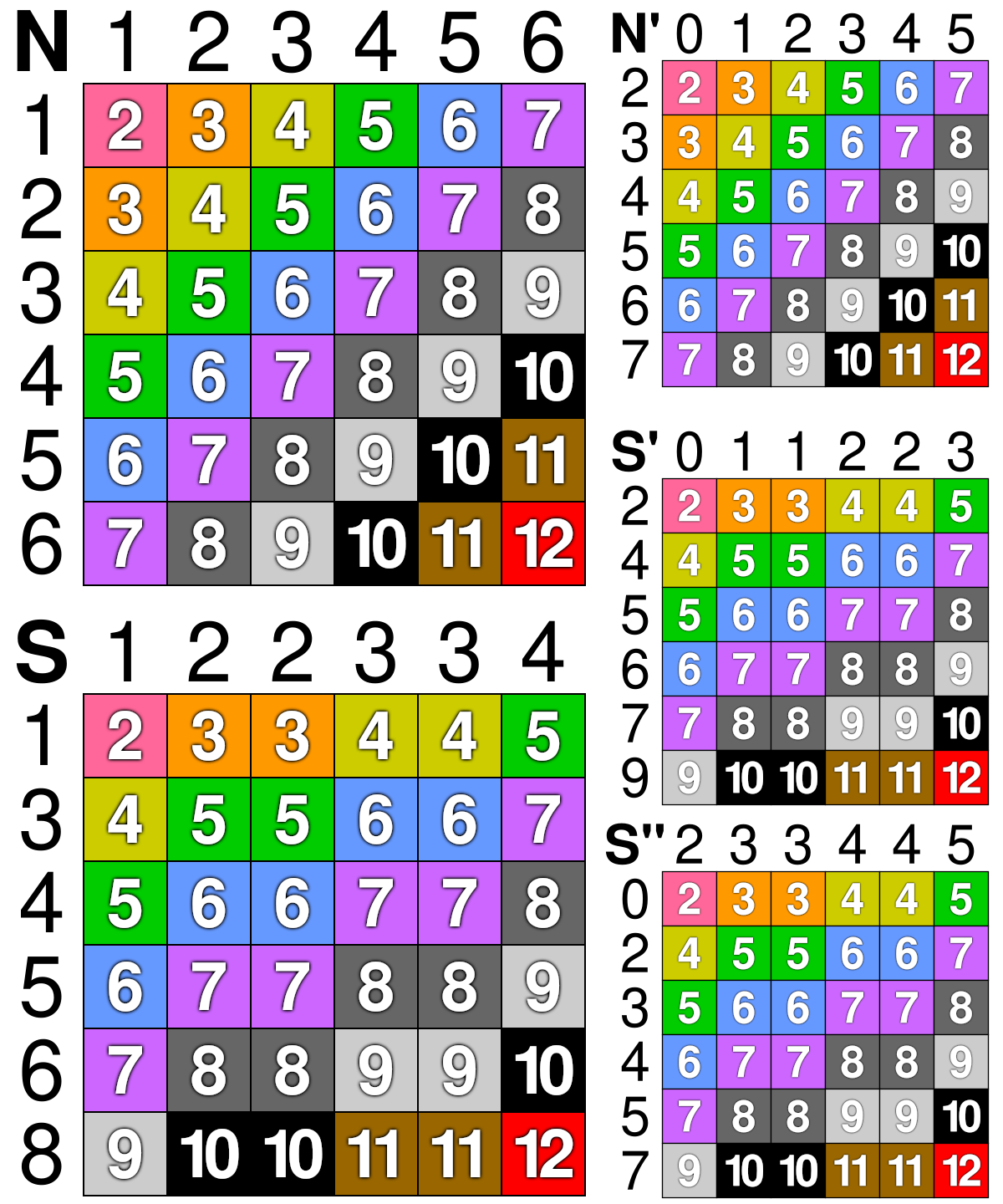



Sicherman Dice Wikipedia
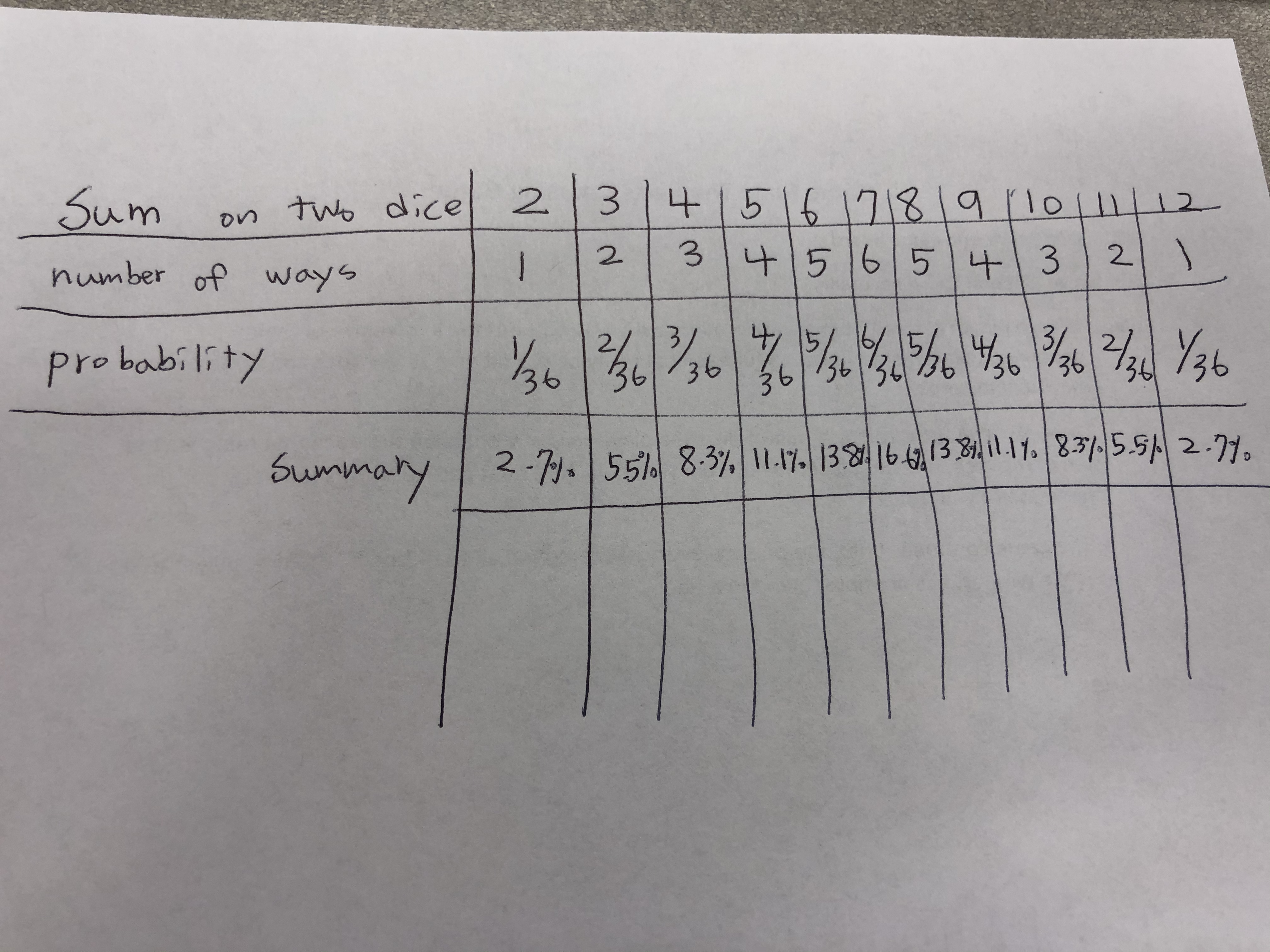



Dice Cards And Probabilities Ming Lab



What Is The Probability Of Getting A Sum Of 8 In Rolling Two Dice Quora



Probability The And Case




Conditional Probability Video Lessons Examples And Solutions
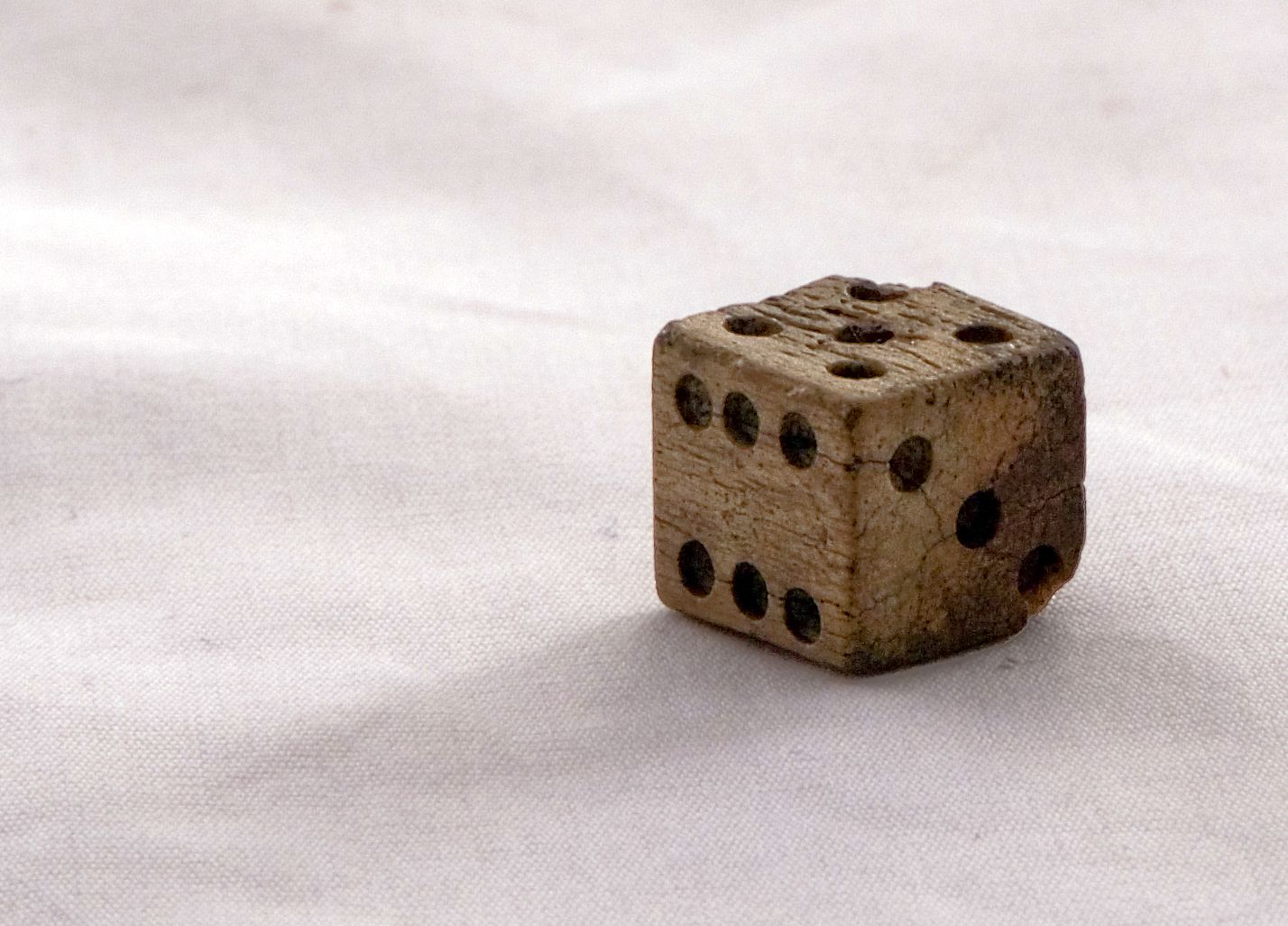



How Do You Know If Dice Are Really Fair Math



Www Math Utah Edu Macarthu Fall13 Math40 9 4b Pdf



Fate Dice Statistics Alex Gude
/close-up-of-dices-on-street-764849093-5a6f86210e23d90036767df7.jpg)



Probabilities For Rolling Three Dice
:max_bytes(150000):strip_icc()/CompoundProbability2-9402bf638f6e4da9882dbdbd23dbd918.png)



Compound Probability Definition




Die Rolling Probability With Independent Events Video Khan Academy
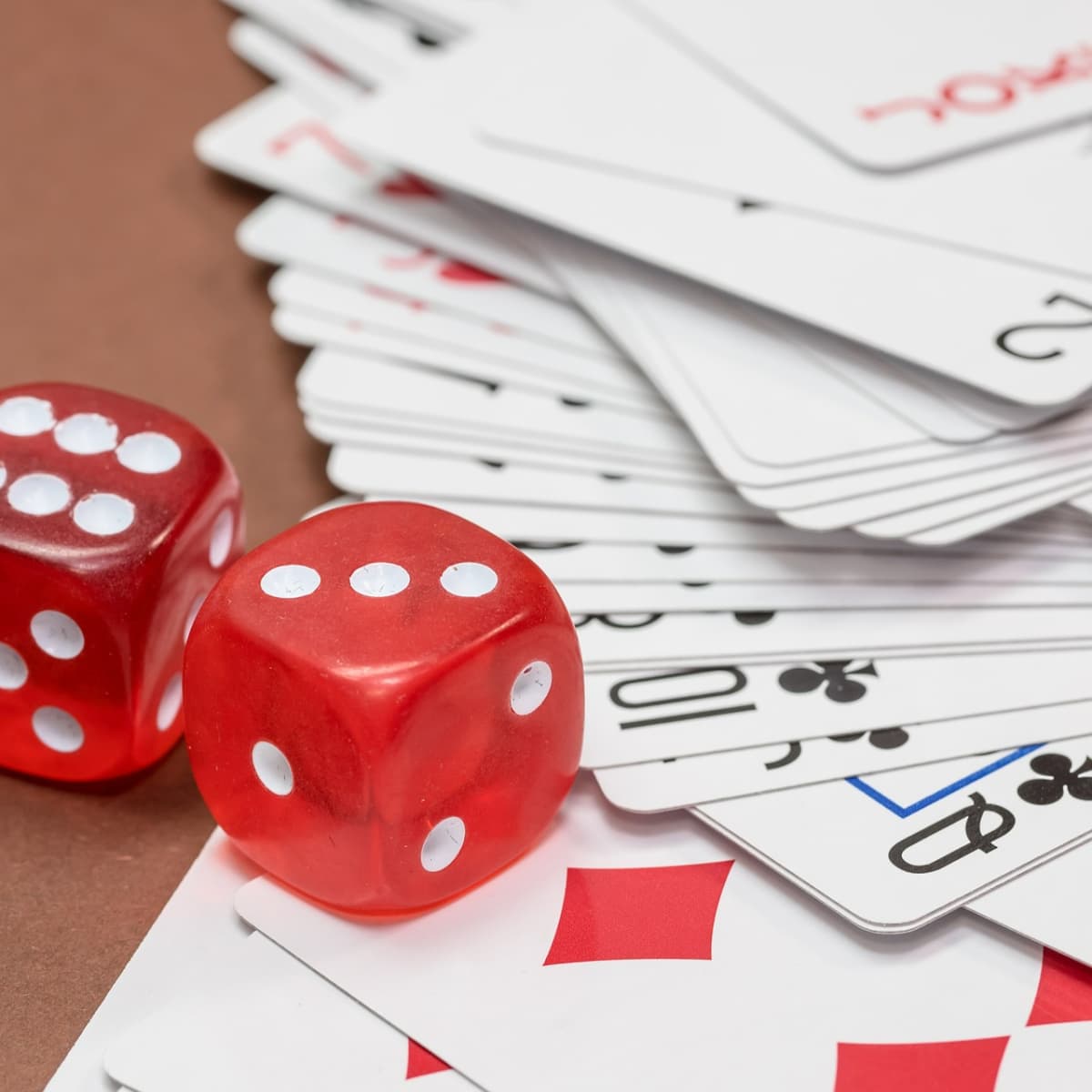



How To Find The Probability Of An Event And Calculate Odds Permutations And Combinations Owlcation
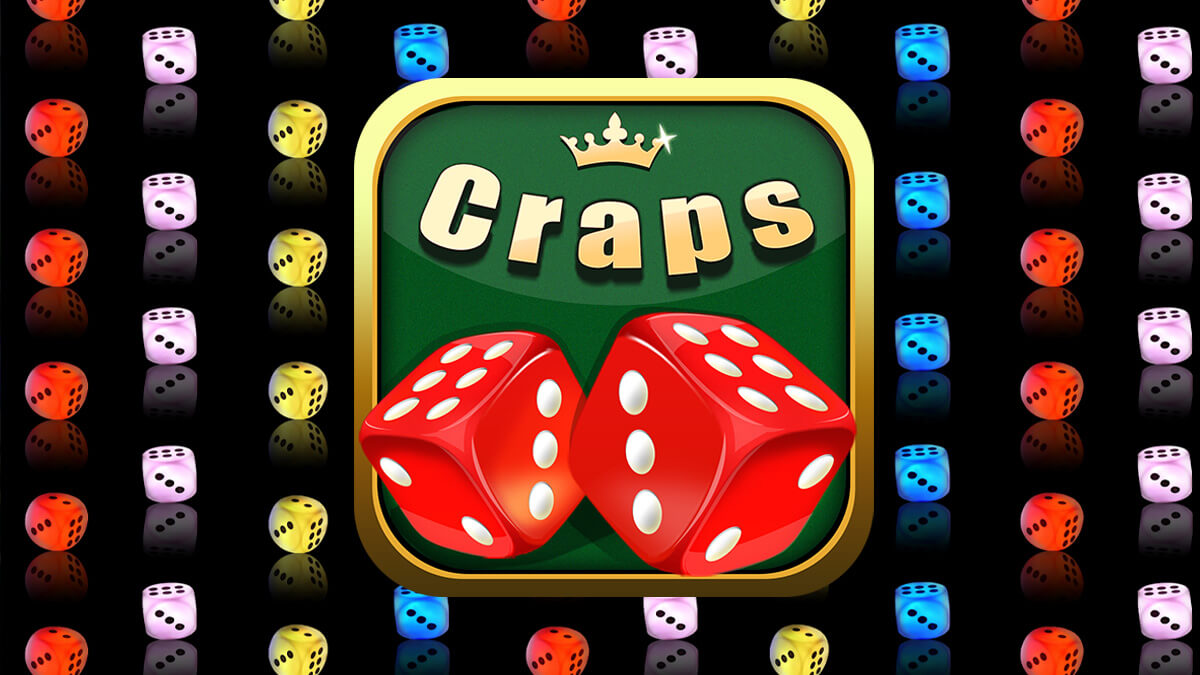



How Dice Combinations Work In Craps Bestuscasinos Org
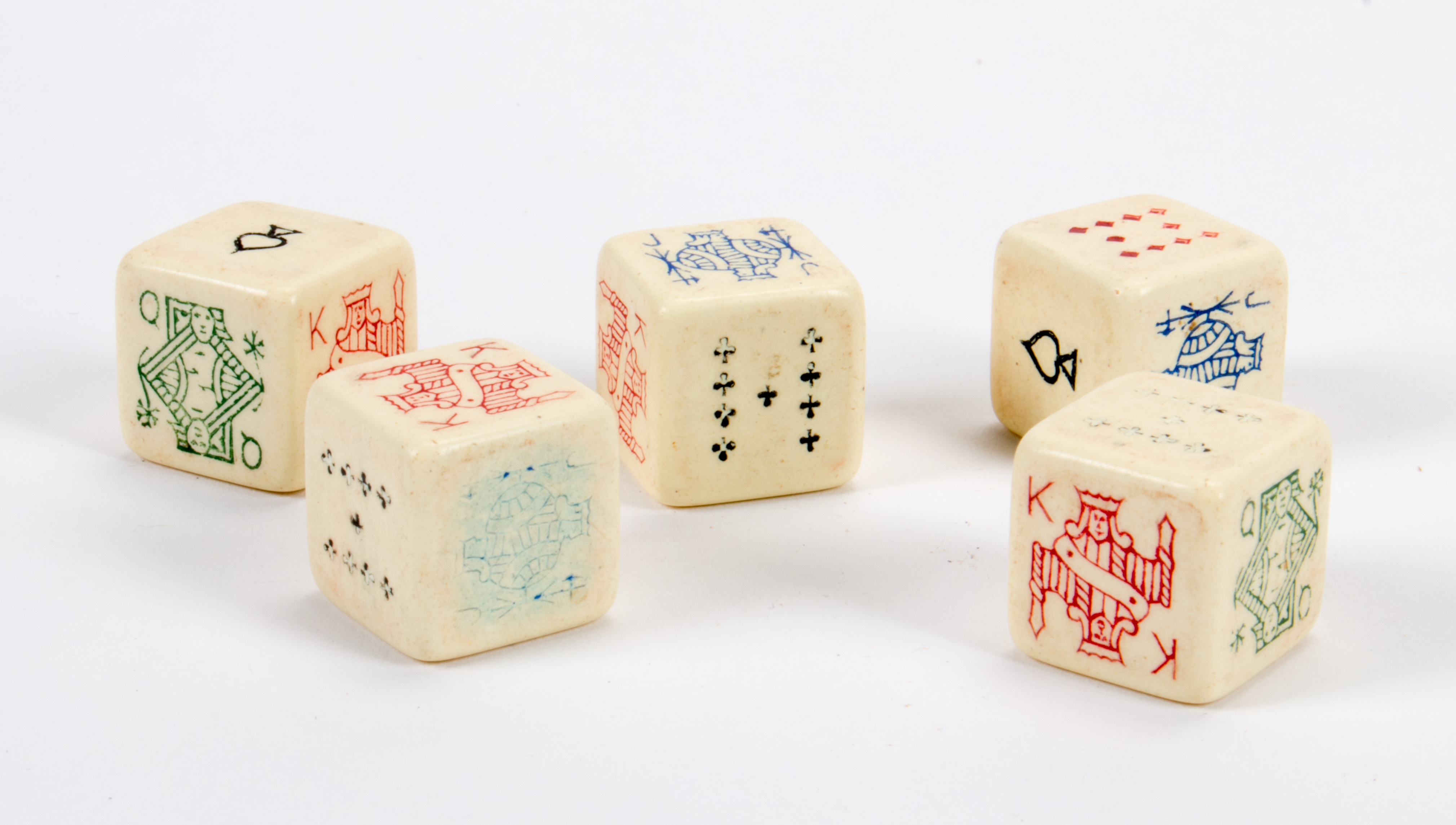



Poker Dice Wikipedia




How To Calculate Dice Probabilities
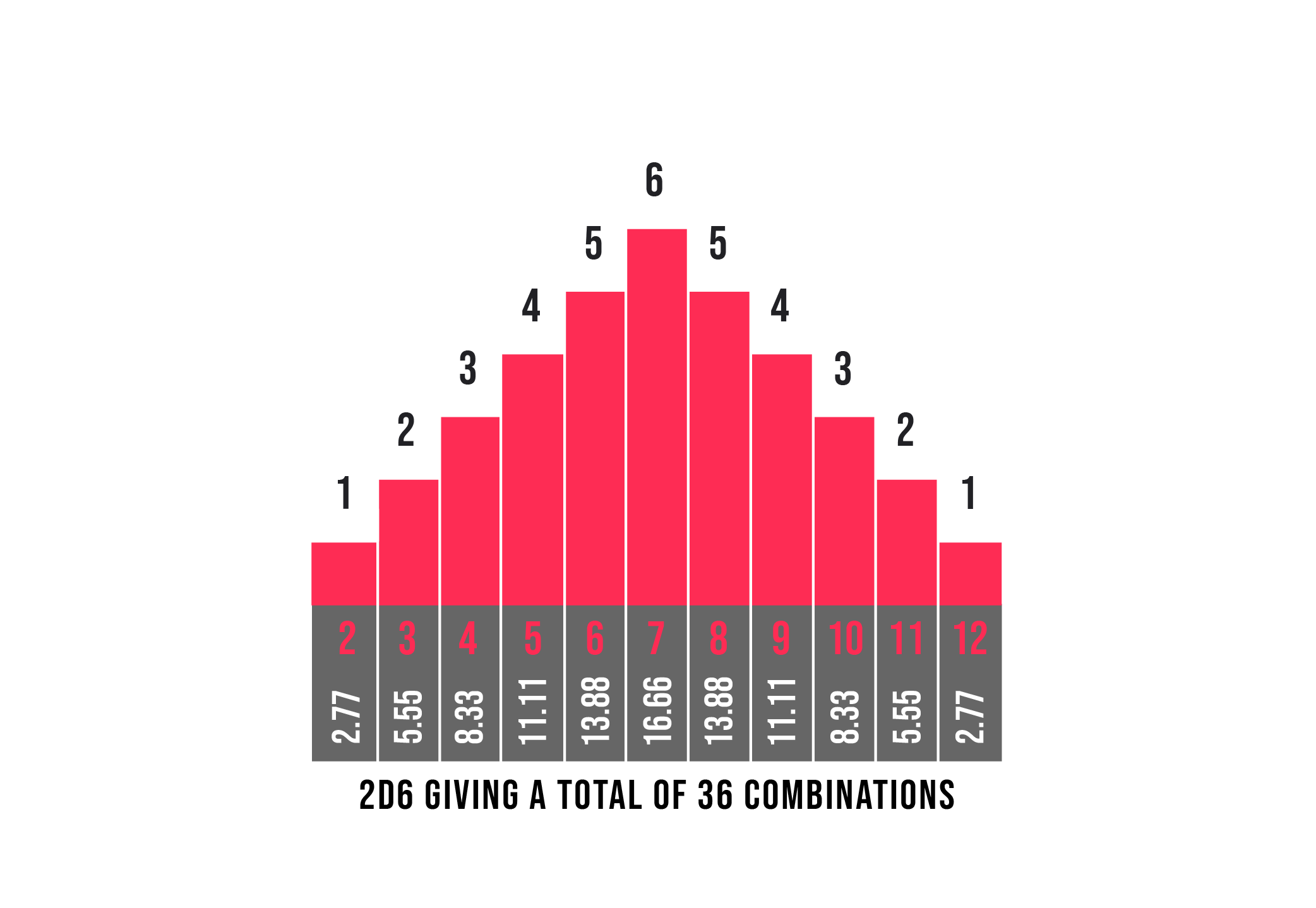



2d6 Probabilities The Dark Fortress




Two Dice Are Thrown Find I The Odds In Favour Of Getting The Sum 6 Ii The Odds Against Getting Youtube



1
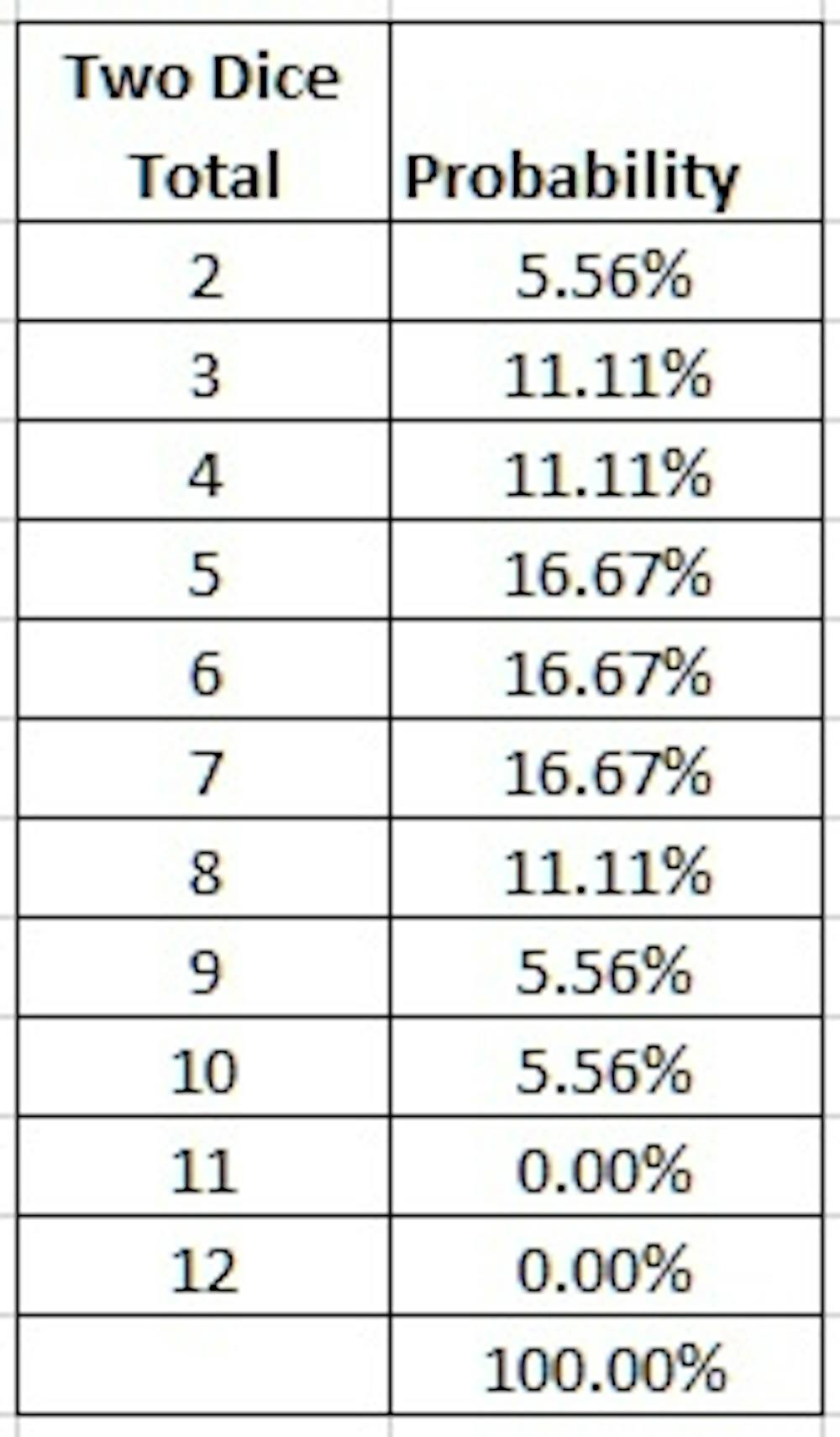



How To Cheat At Dice From An Expert In Games



1




The Odds Against A Certain Event Are 5 To 2 And The Odds In A Favor Of Another Event Independent




Using Python To Calculate Dice Statistics Jeffastor Com
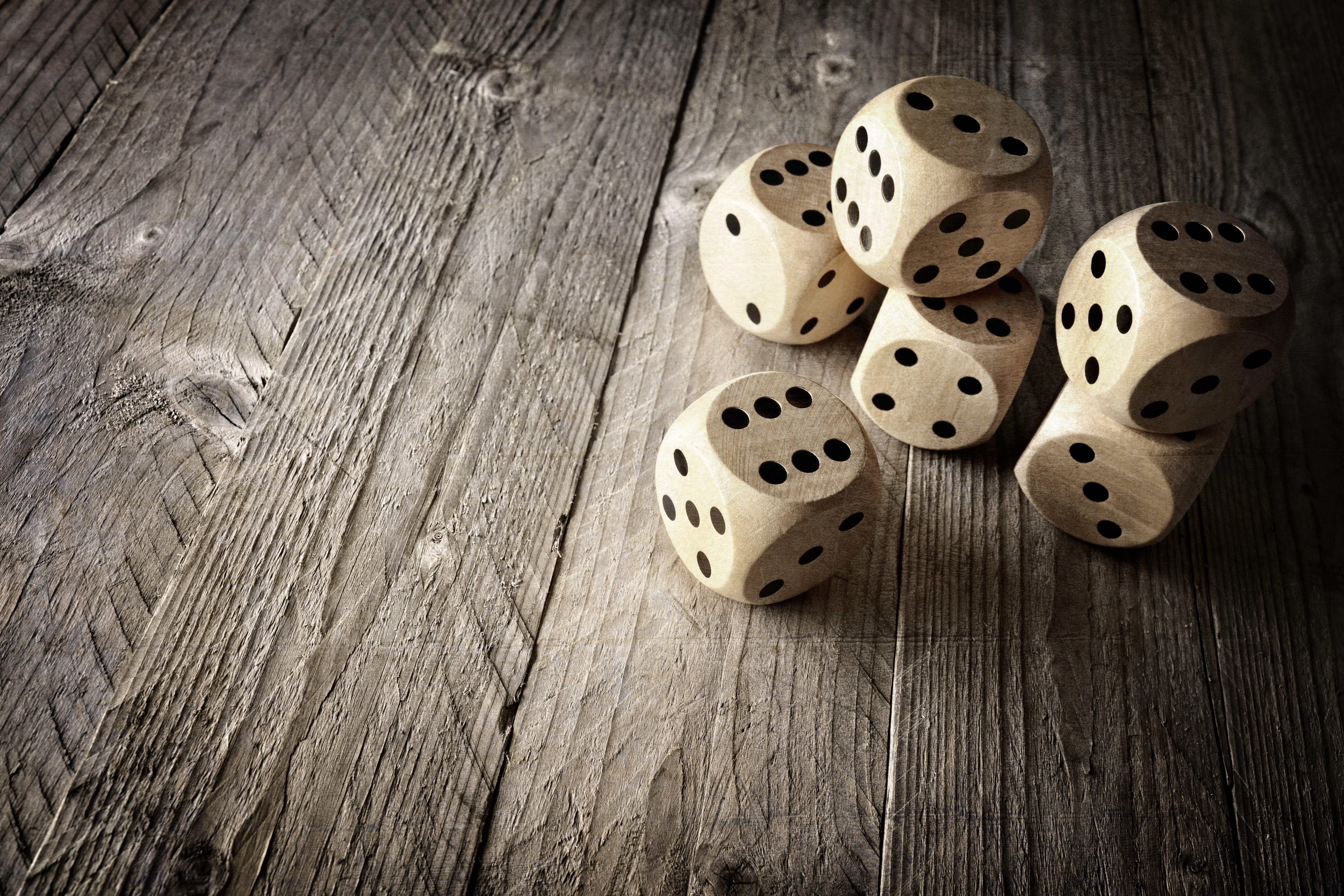



How To Calculate Dice Probabilities




Using Python To Calculate Dice Statistics Jeffastor Com
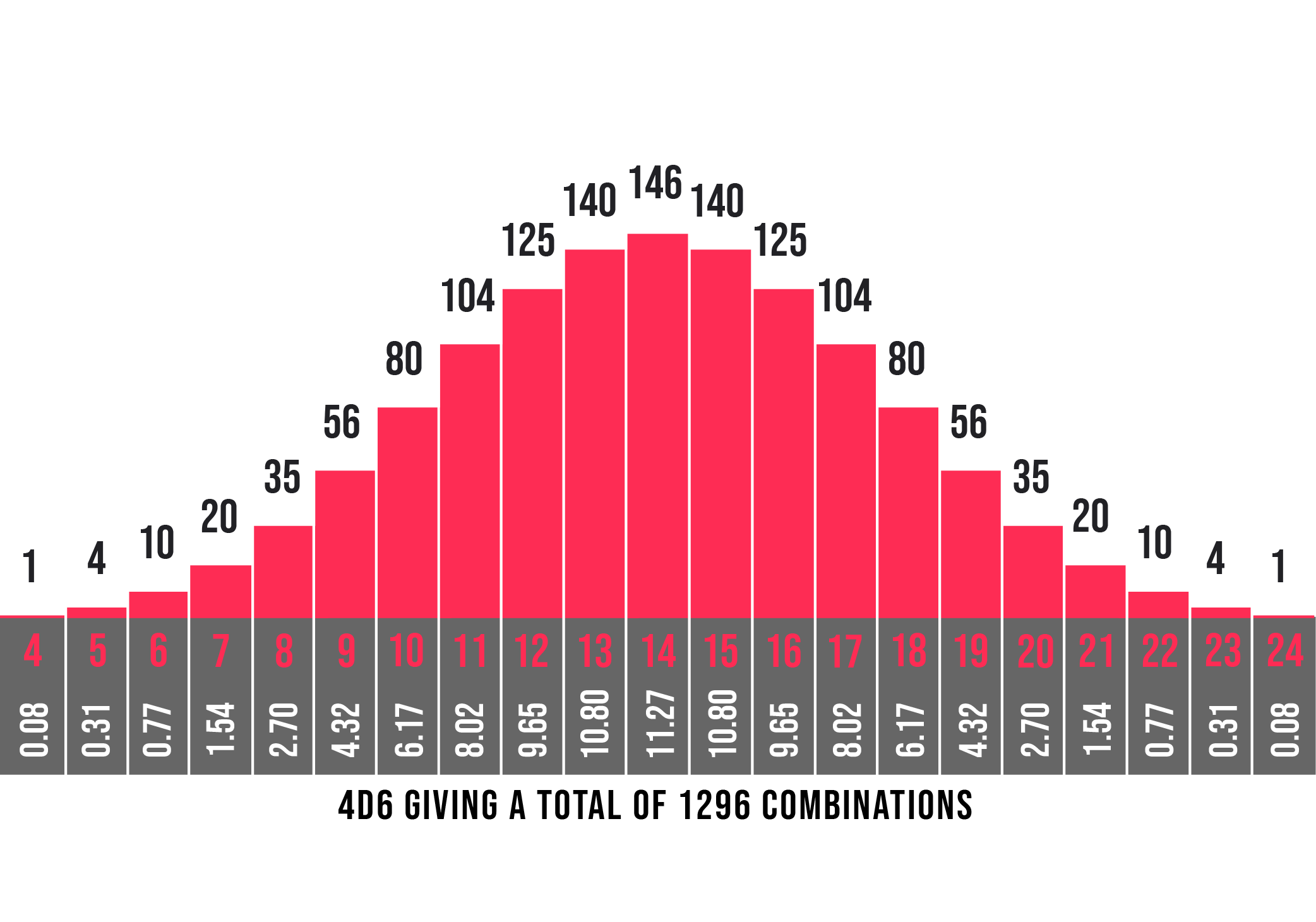



4d6 Probabilities The Dark Fortress
/invest-chart17-01-b6840b5dae61481aa99e8d0c7907de34.png)



Using Common Stock Probability Distribution Methods




36 Odds Expected Value And Conditional Probability Pdf Free Download




Do Dice Play God Review The Ins And Outs Of Odds Wsj




Solved Espanol A Jose Is Playing A Role Playing Game Wi Chegg Com



Chapter 4 Introduction To Probability Statistics At Eastside Prep




Non Transitive Dice




10 3 Probability Notes And Activity
/GettyImages-966740056-5b19a9713418c60036694a98.jpg)



The Probability Of Rolling A Yahtzee




Odds Vs Probability Youtube



Solved A A Child Has A Box Full Of Colored Building Blocks If She Chooses One Block Without Looking The Probability Of Choosing A Green Block I Course Hero




5 Ways To Calculate Multiple Dice Probabilities Wikihow




Rolling A Die Interactive Questions Solved Examples Cuemath




Compound Probability Rolling Dice Youtube




Mathhammer Tables For Charge Ranges 2d6 2d6 From Ds 2d6 With Rerolls Forum Dakkadakka Roll The Dice To See If I M Getting Drunk
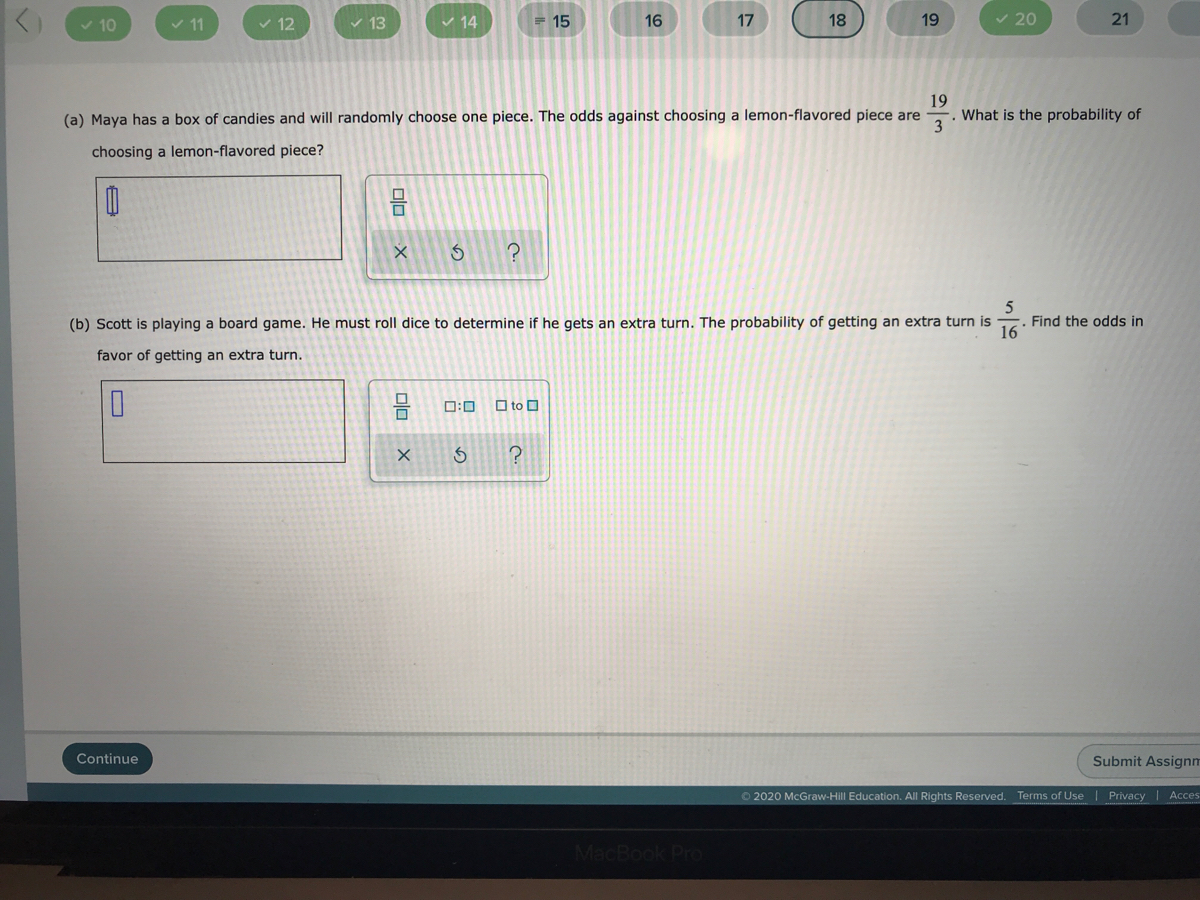



Answered 19 What Is The Probability Of 3 Maya Bartleby




What Is The Difference Between Rolling More Dice Versus Fewer Dice Role Playing Games Stack Exchange
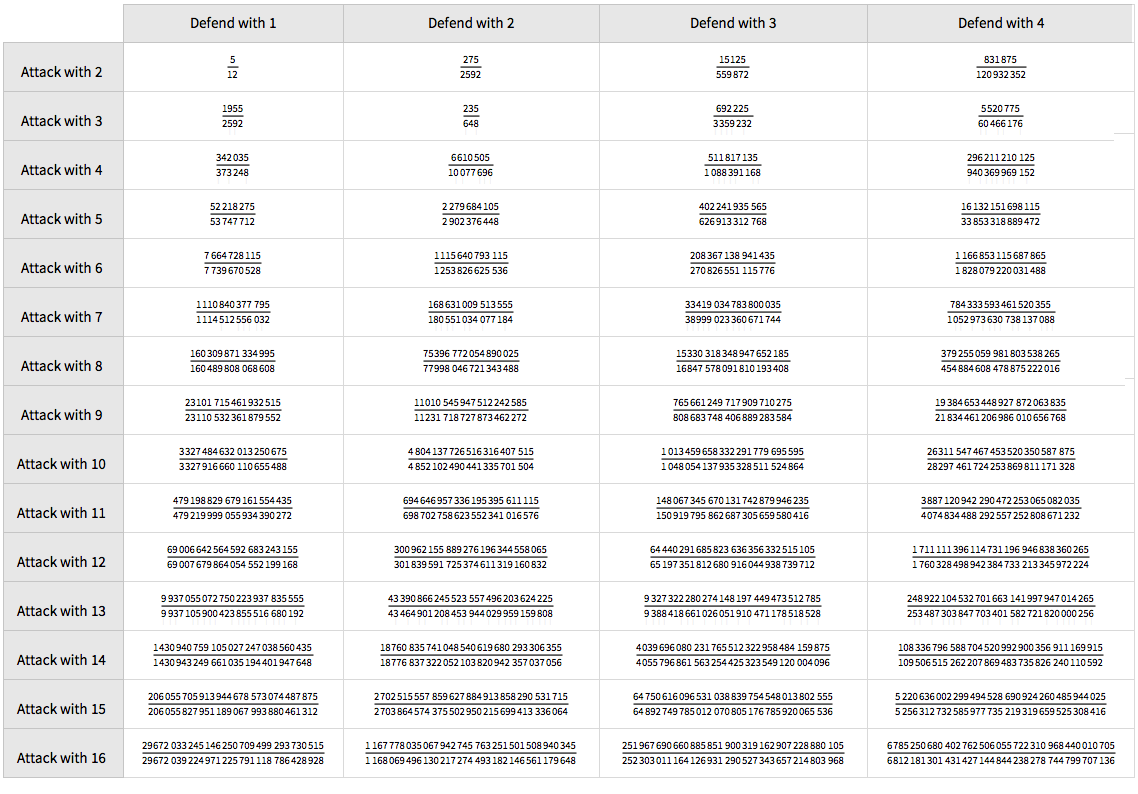



How To Win At Risk Exact Probabilities Wolfram Blog
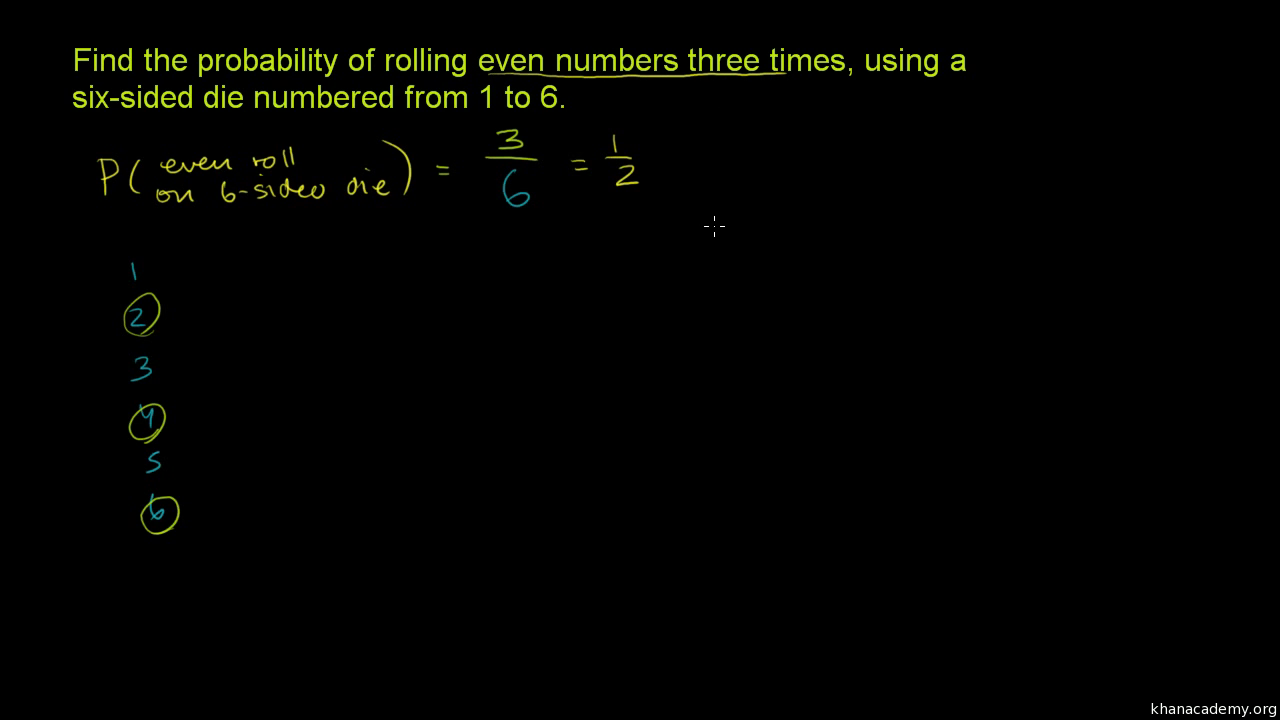



Die Rolling Probability With Independent Events Video Khan Academy



Dice Probabilities Reference Card I Found A Lot Of Dice Probability Tools And Charts Out There But I Wanted Something I Could Quickly Reference During A Match Here Is What I Put




How And Why Computers Roll Loaded Dice Quanta Magazine




Gambling Probability 14 Examples With Detailed Explanations



Simulating 50 000 Games Makes A Case For Social Distancing By Ayman Bari Towards Data Science




Jason Ash Thought Archive




12 A Group Of Students Are Holding A Charity Carnival Chegg Com



Hollenbeckscience Weebly Com Uploads 2 9 4 9 Probability Answers Pdf




Calculating Probability And Odds How To Find The Odds Of Casino Games
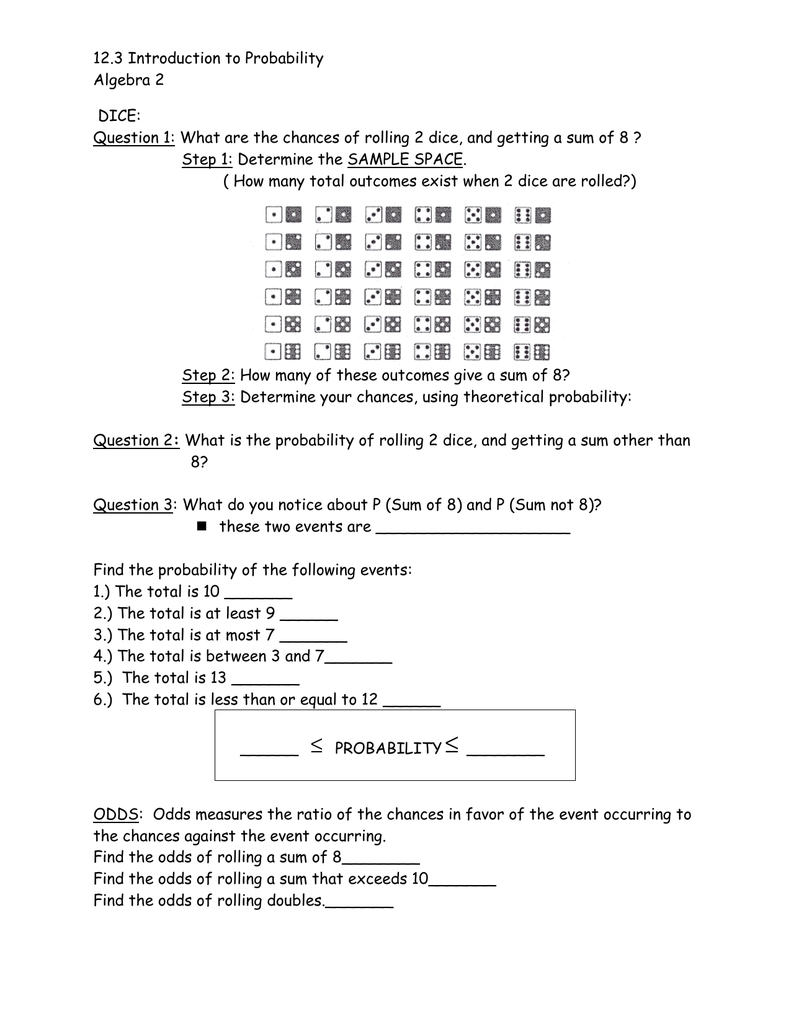



12 3 Introduction To Probability Algebra 2 Dice



Http Ic Arc Losrios Edu Mirzaam Math300 Ptprob Pdf



Q Tbn And9gctxz8owky Sul84xtk4ggzacxwhkmhguhlxwyjj9avufagdrhwm Usqp Cau




Why Is The Sum Of The Rolls Of Two Dices A Binomial Distribution What Is Defined As A Success In This Experiment Mathematics Stack Exchange




Dice Probability Explained Game Master Dice




A Probability Experiment Is A Chance Process That Leads To Well Defined Outcomes 3 What Is The Difference Between An Outcome And An Event Pdf Free Download




Probabilities And Odds In Medical Science Donders Wonders



0 件のコメント:
コメントを投稿